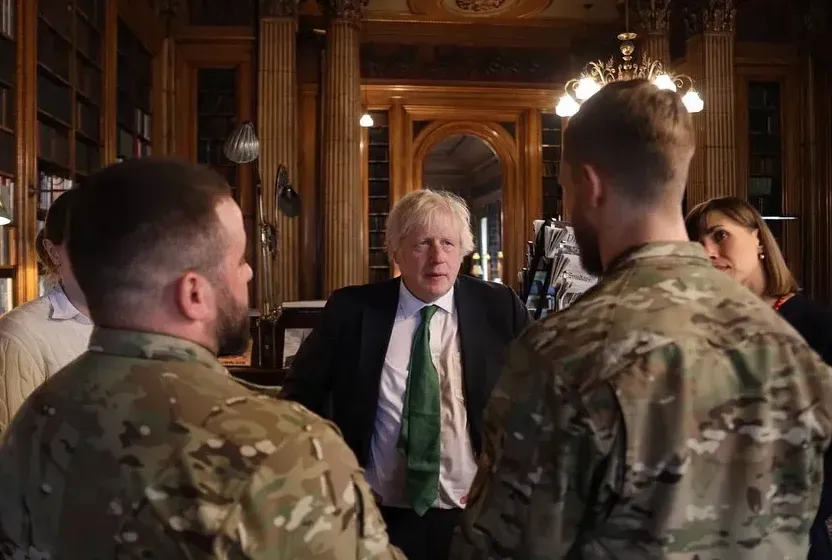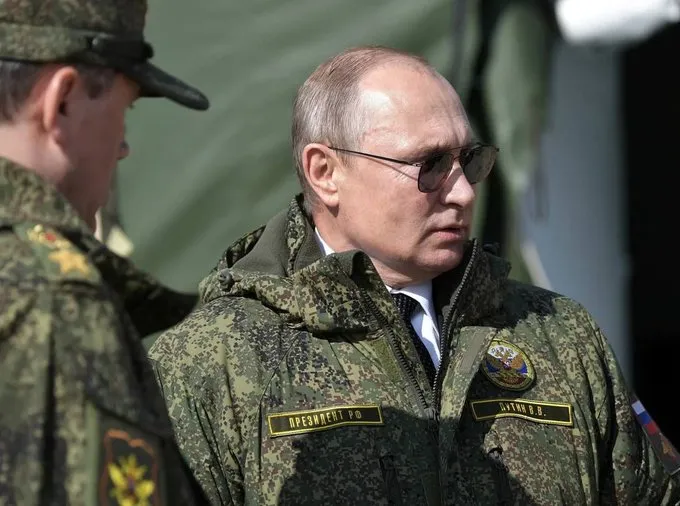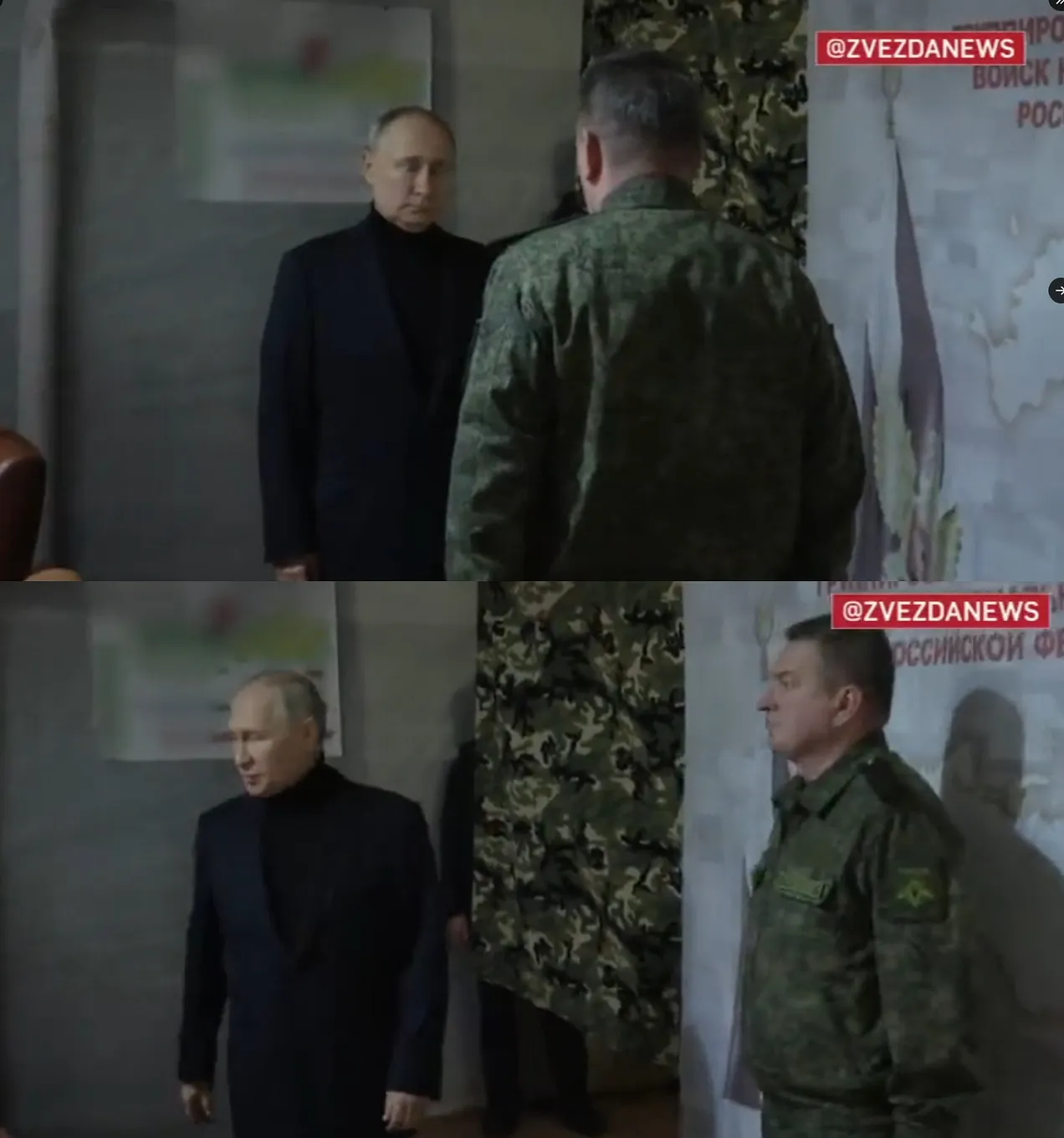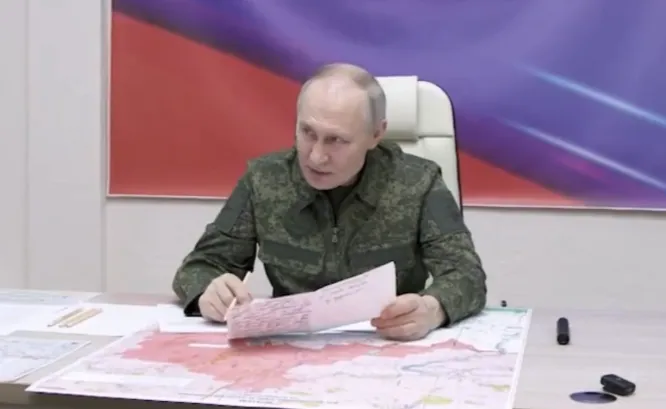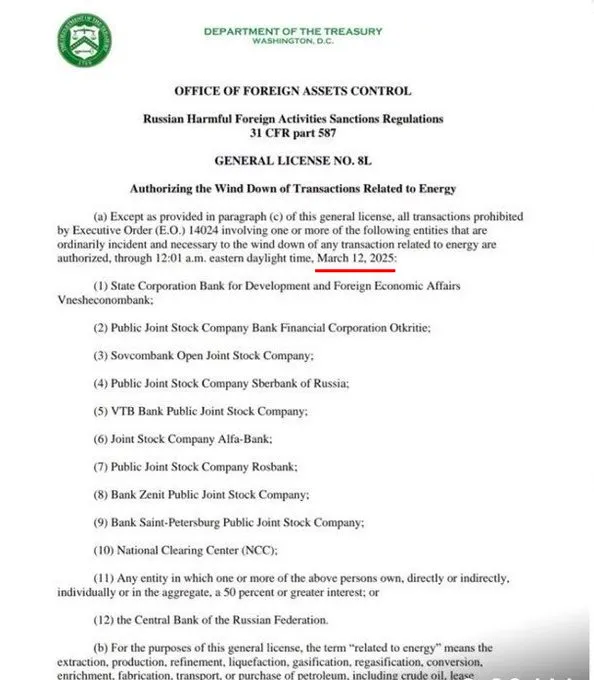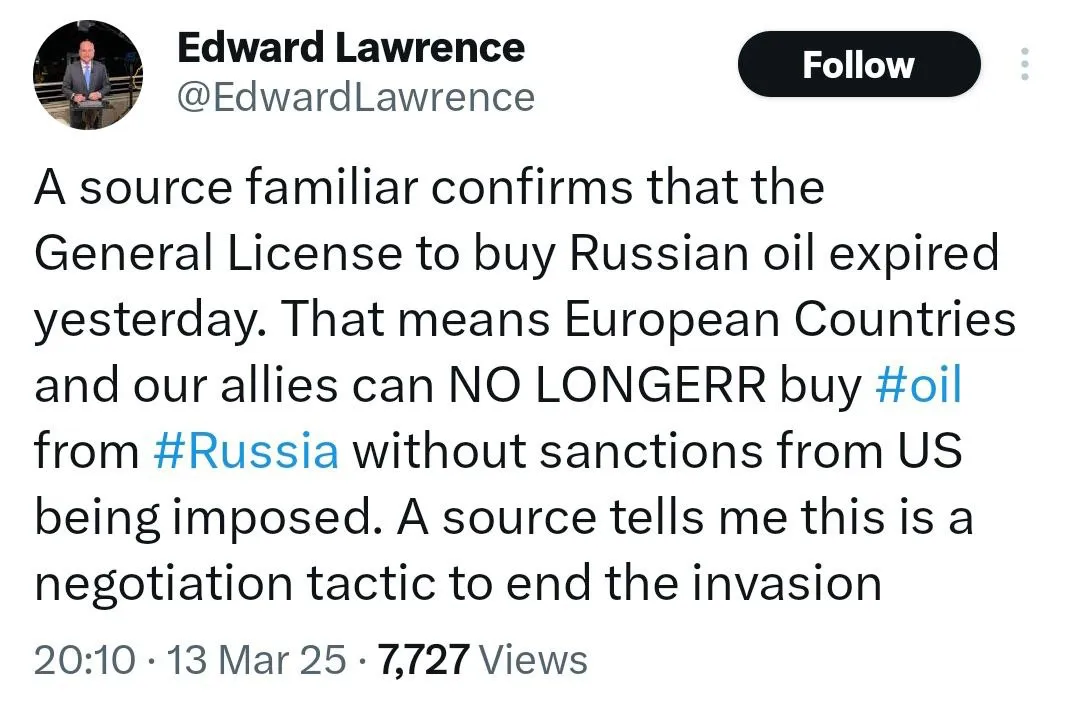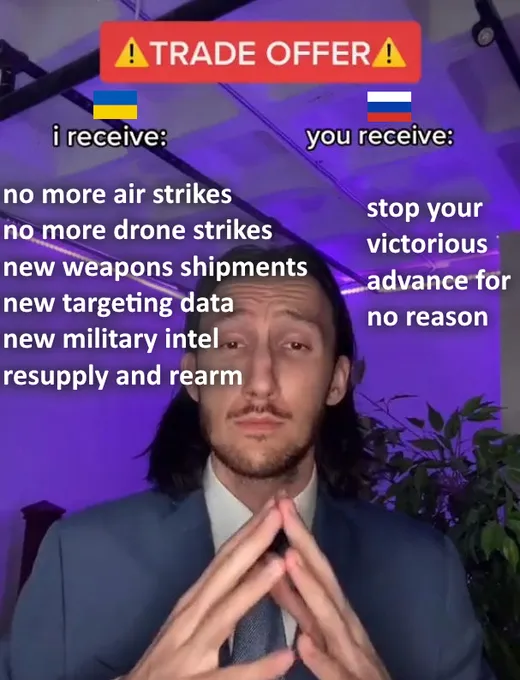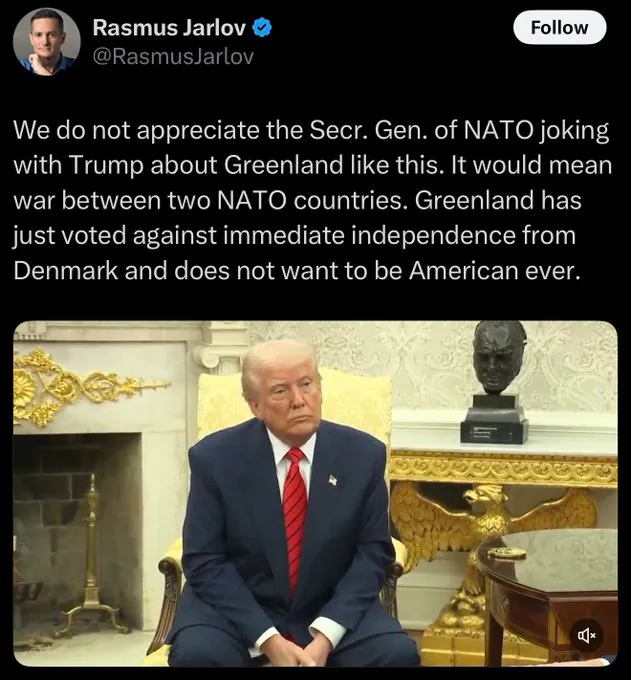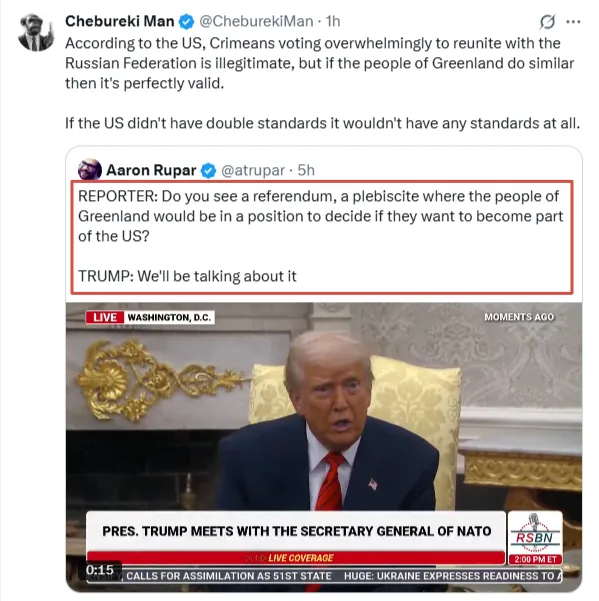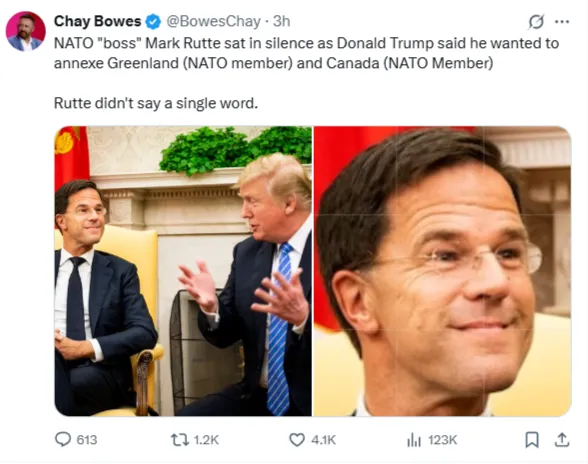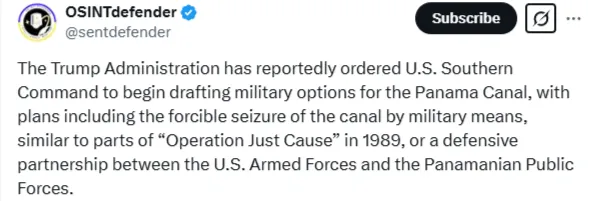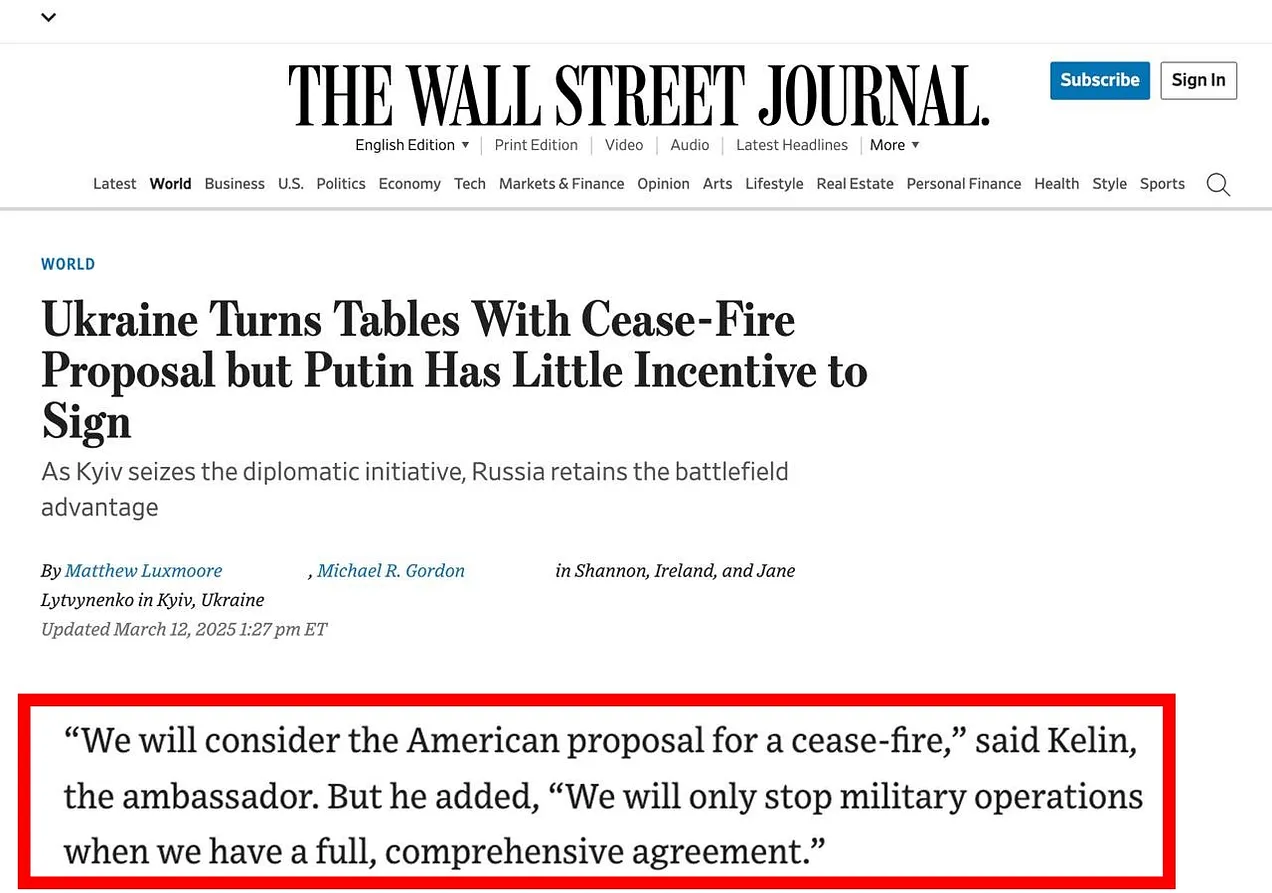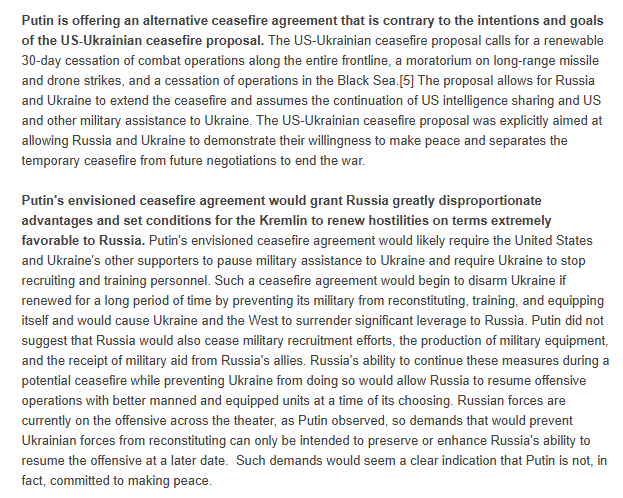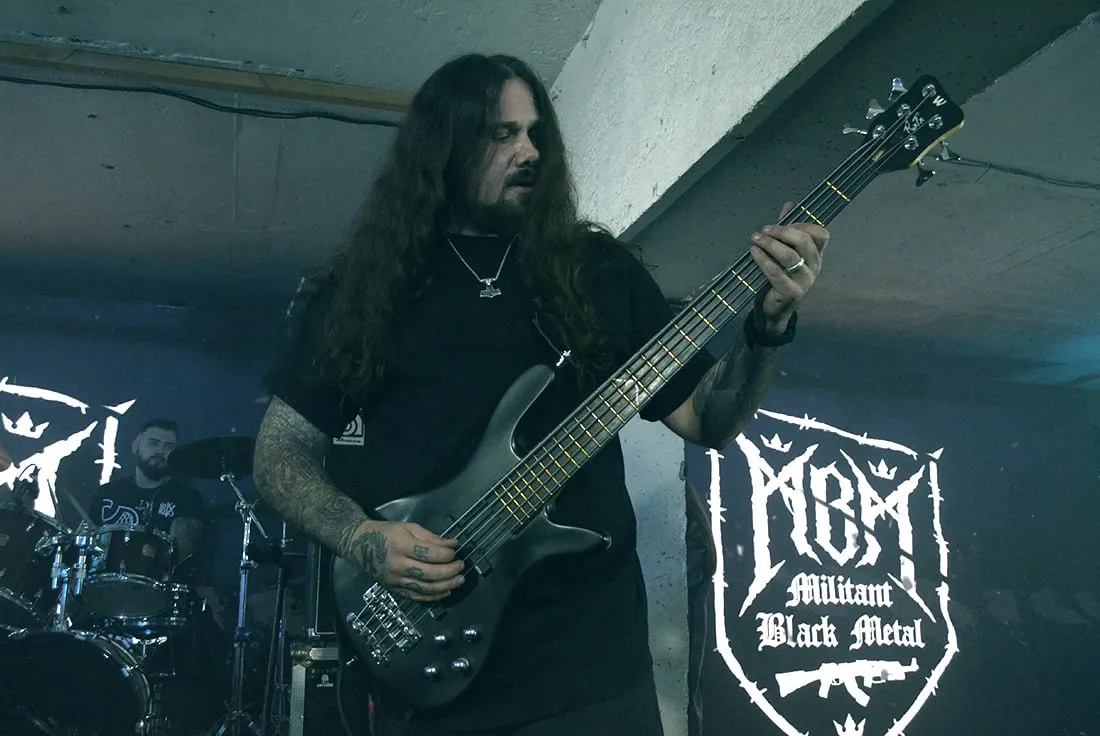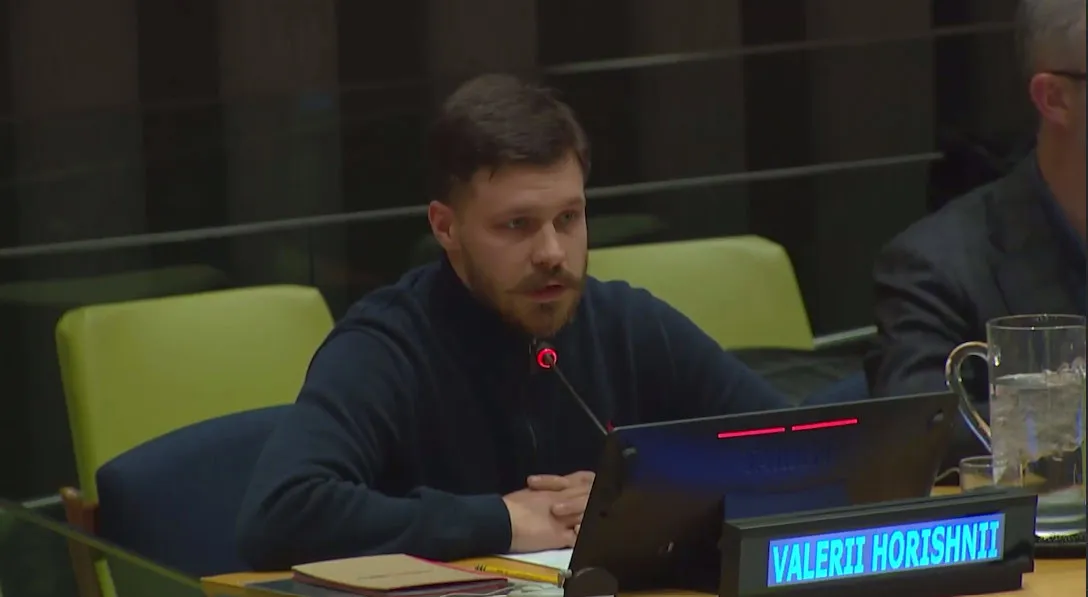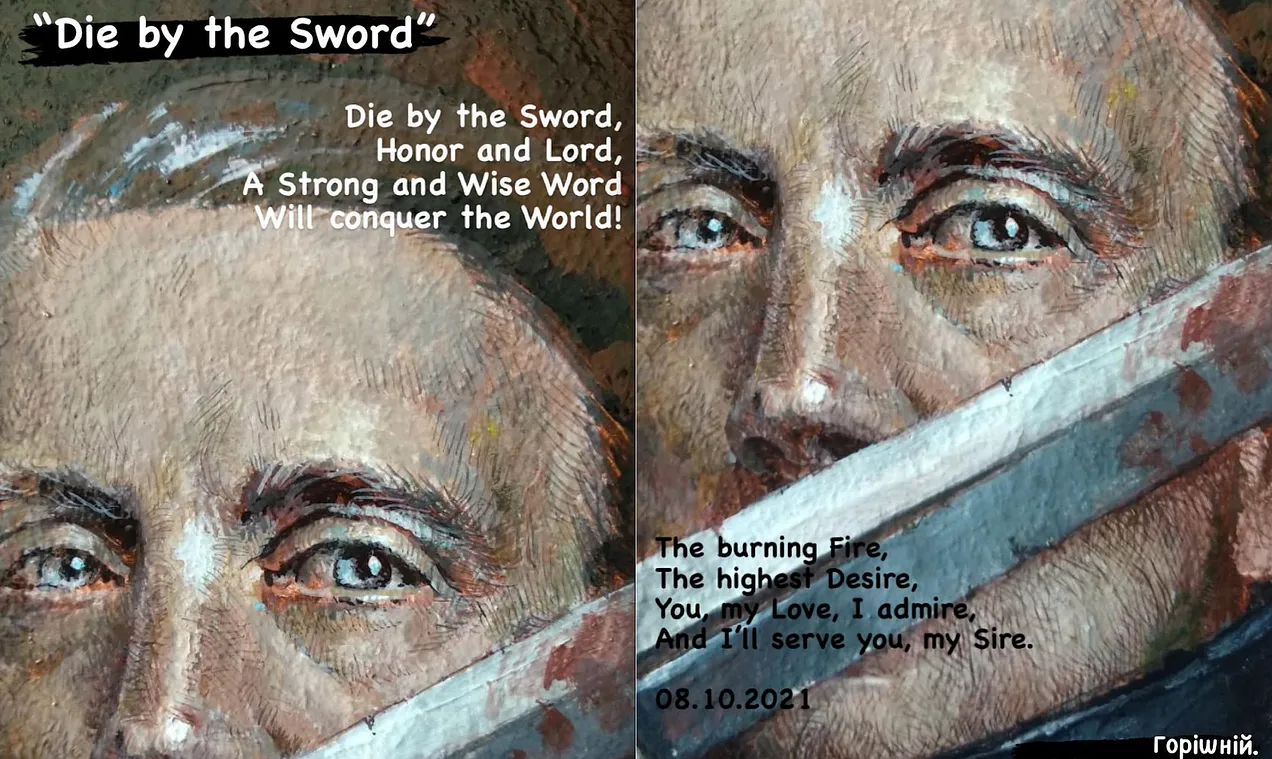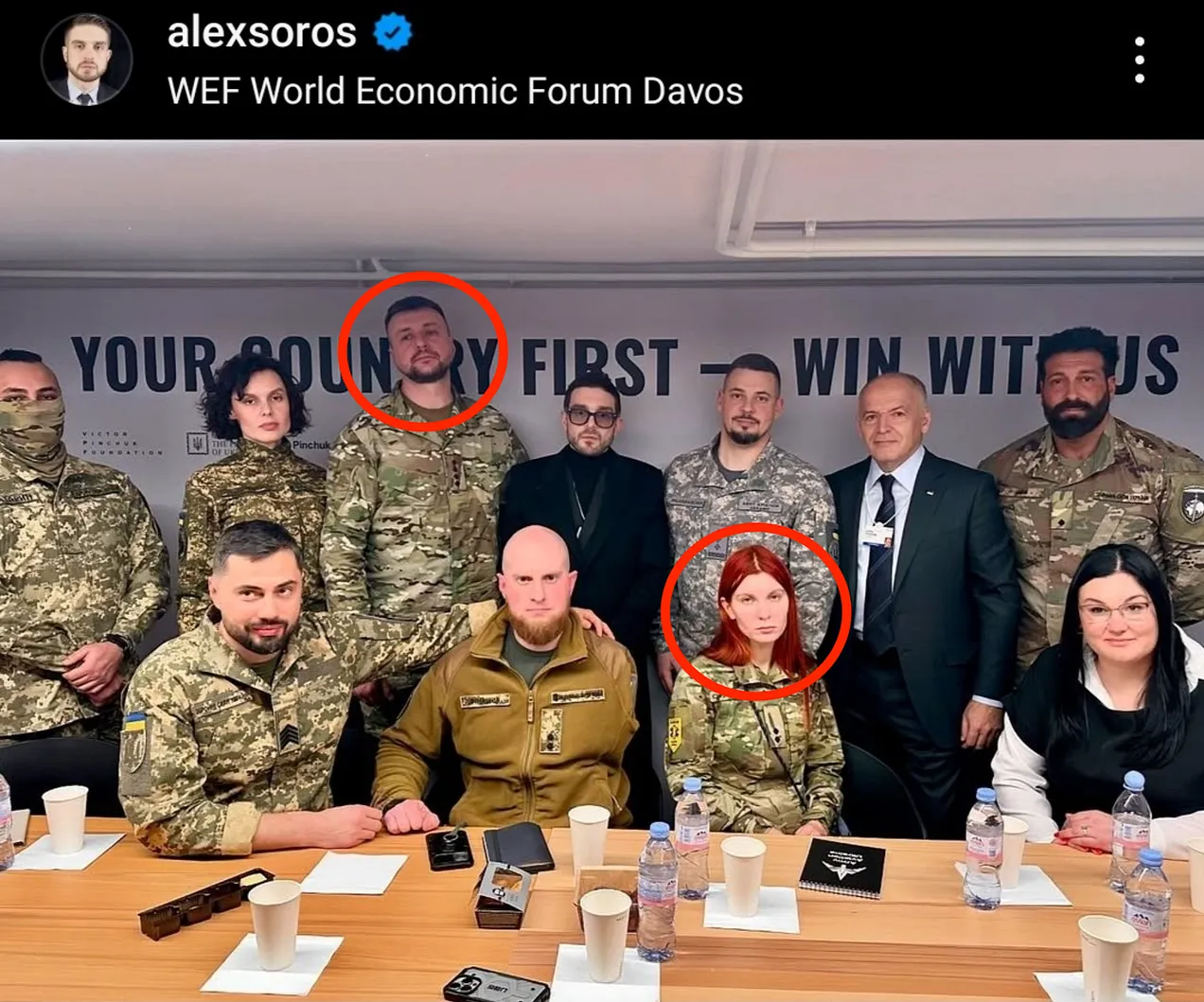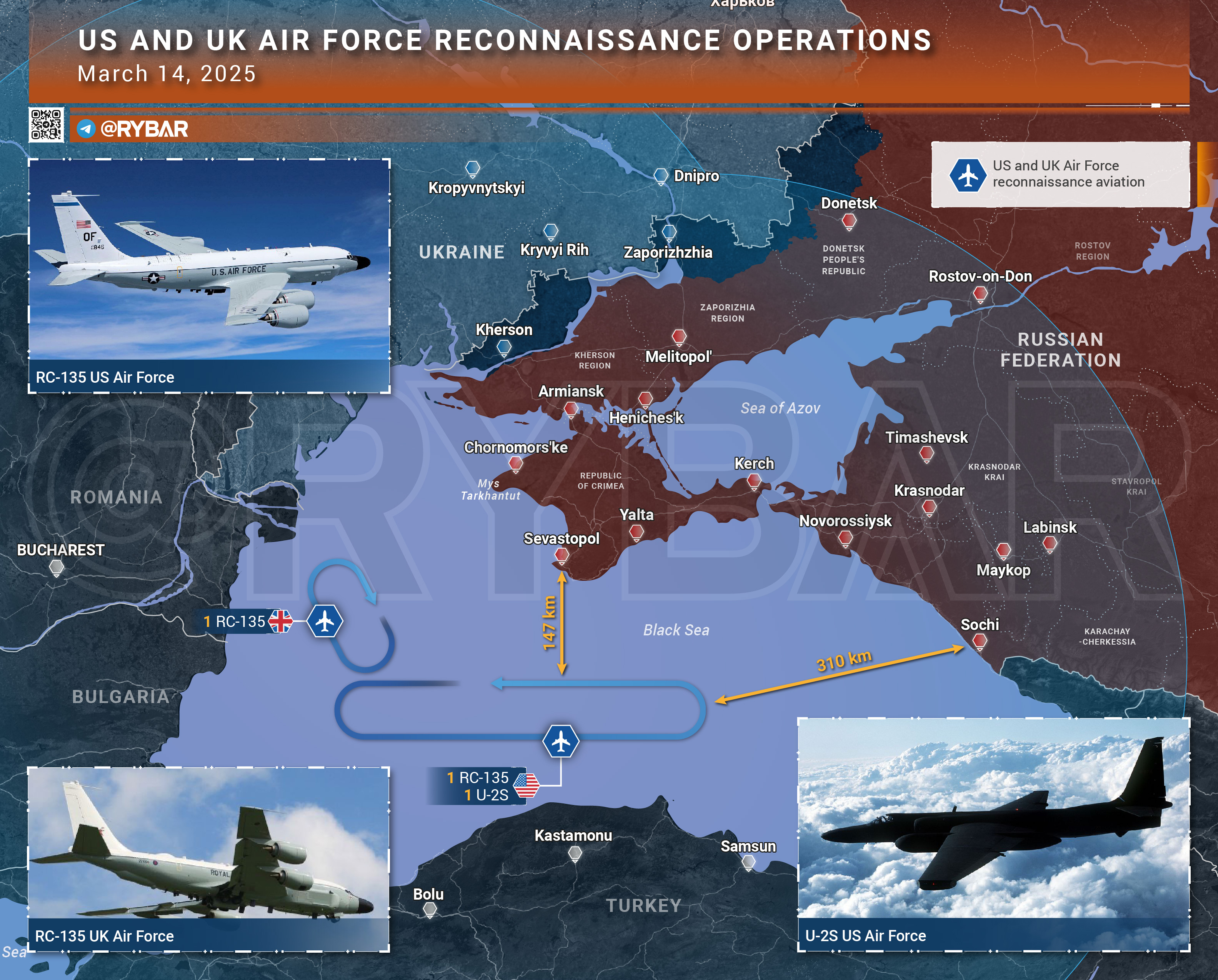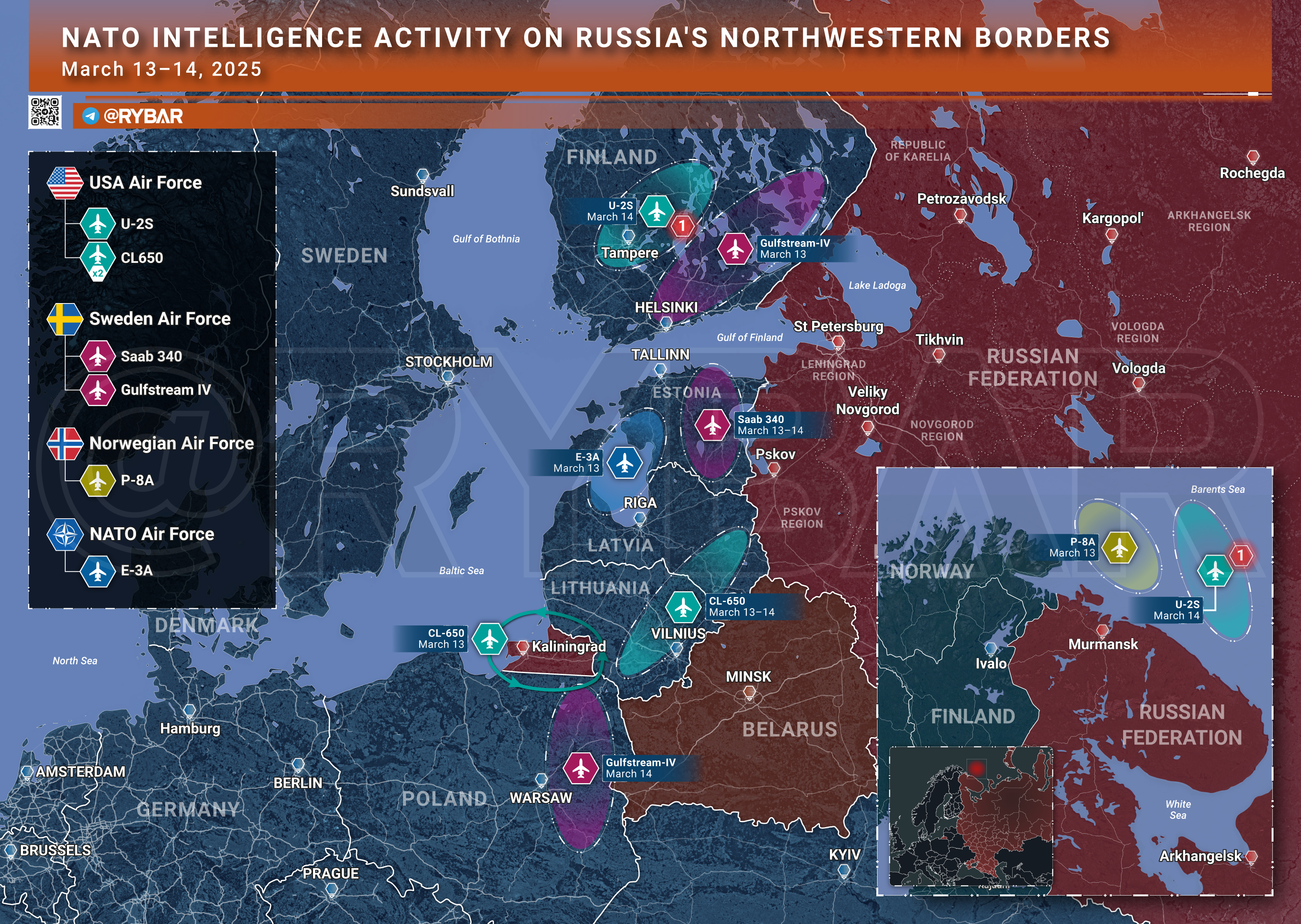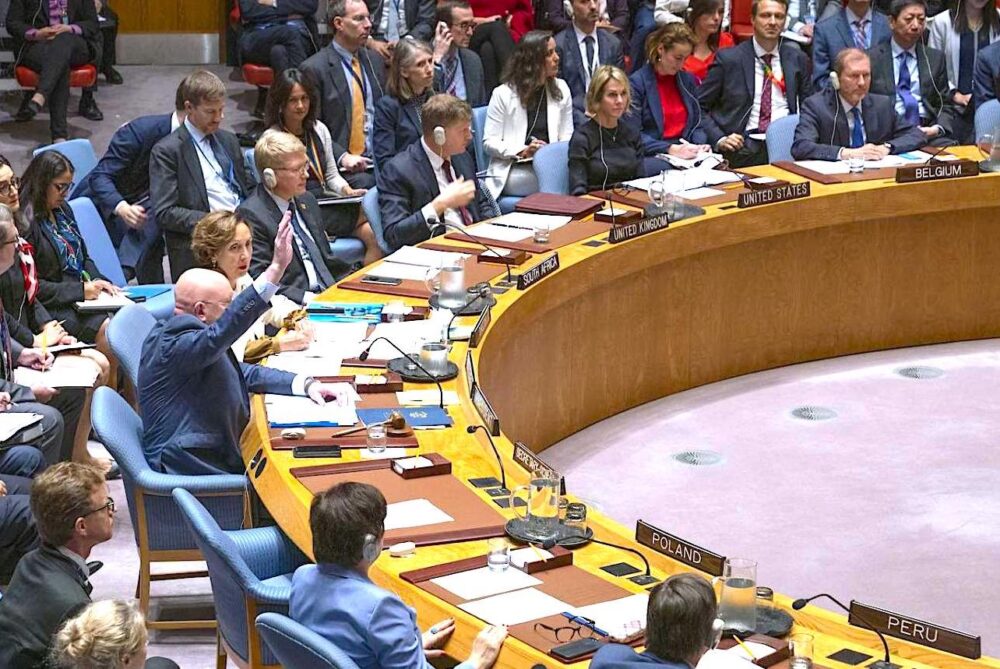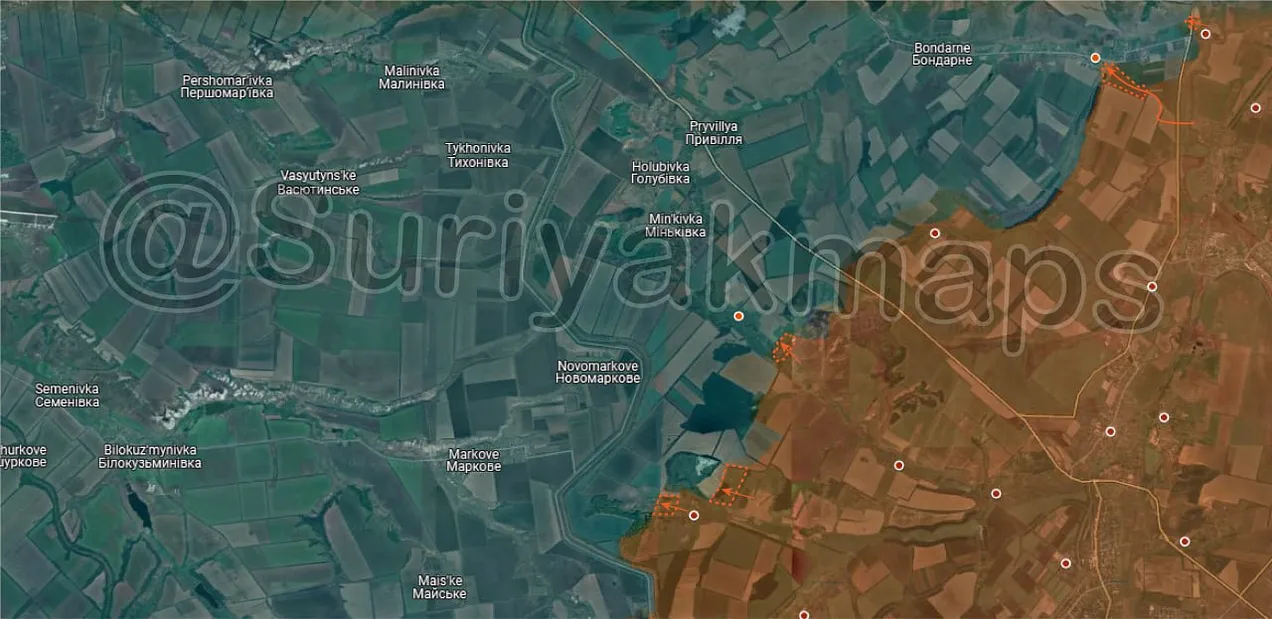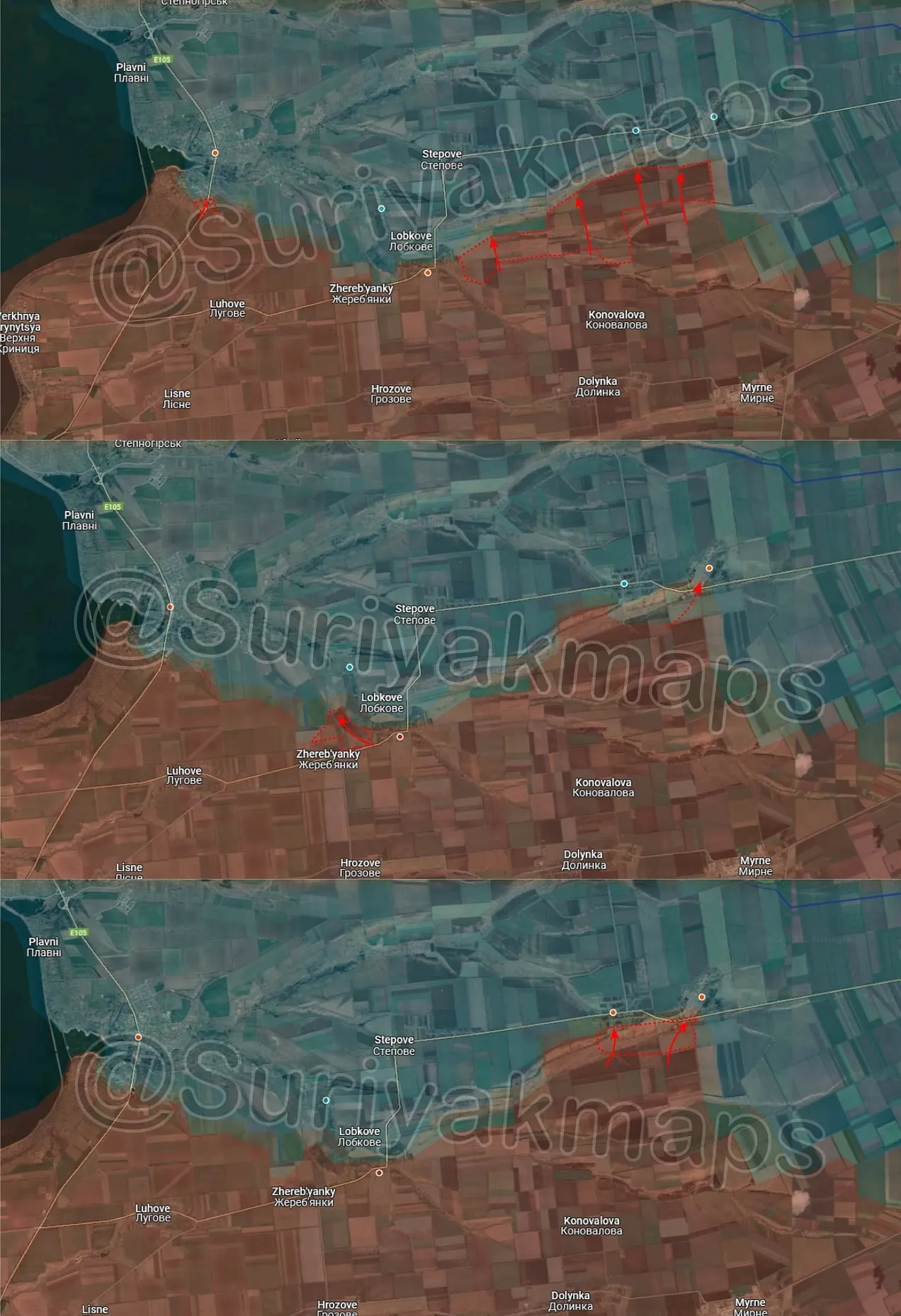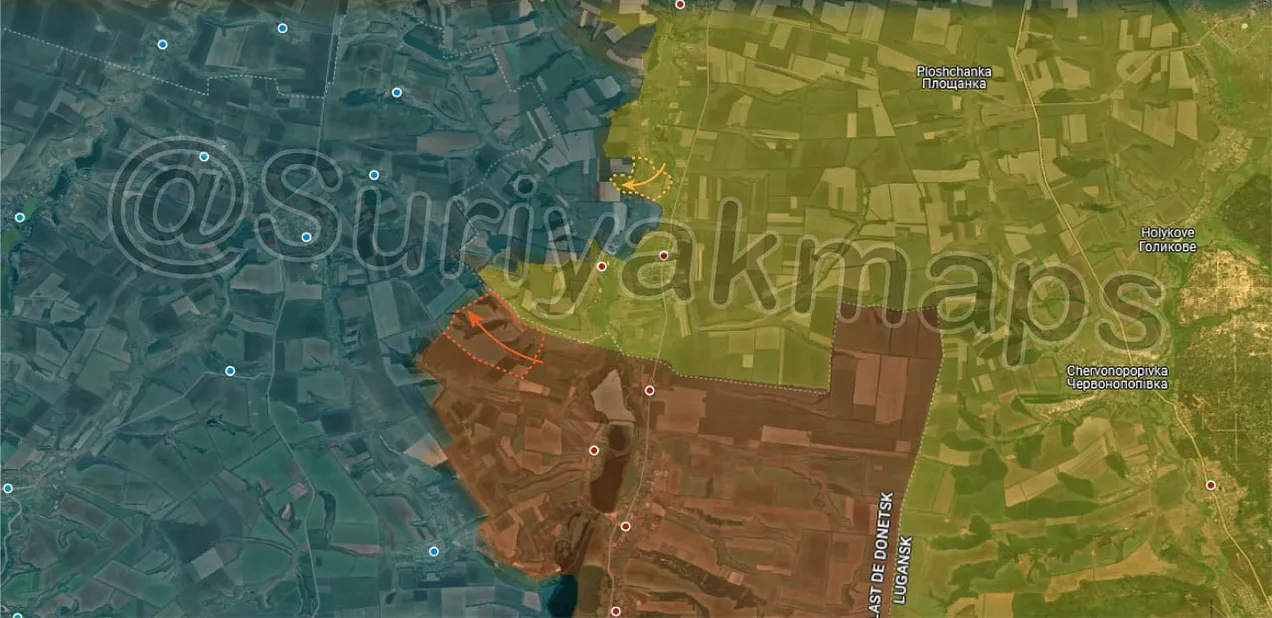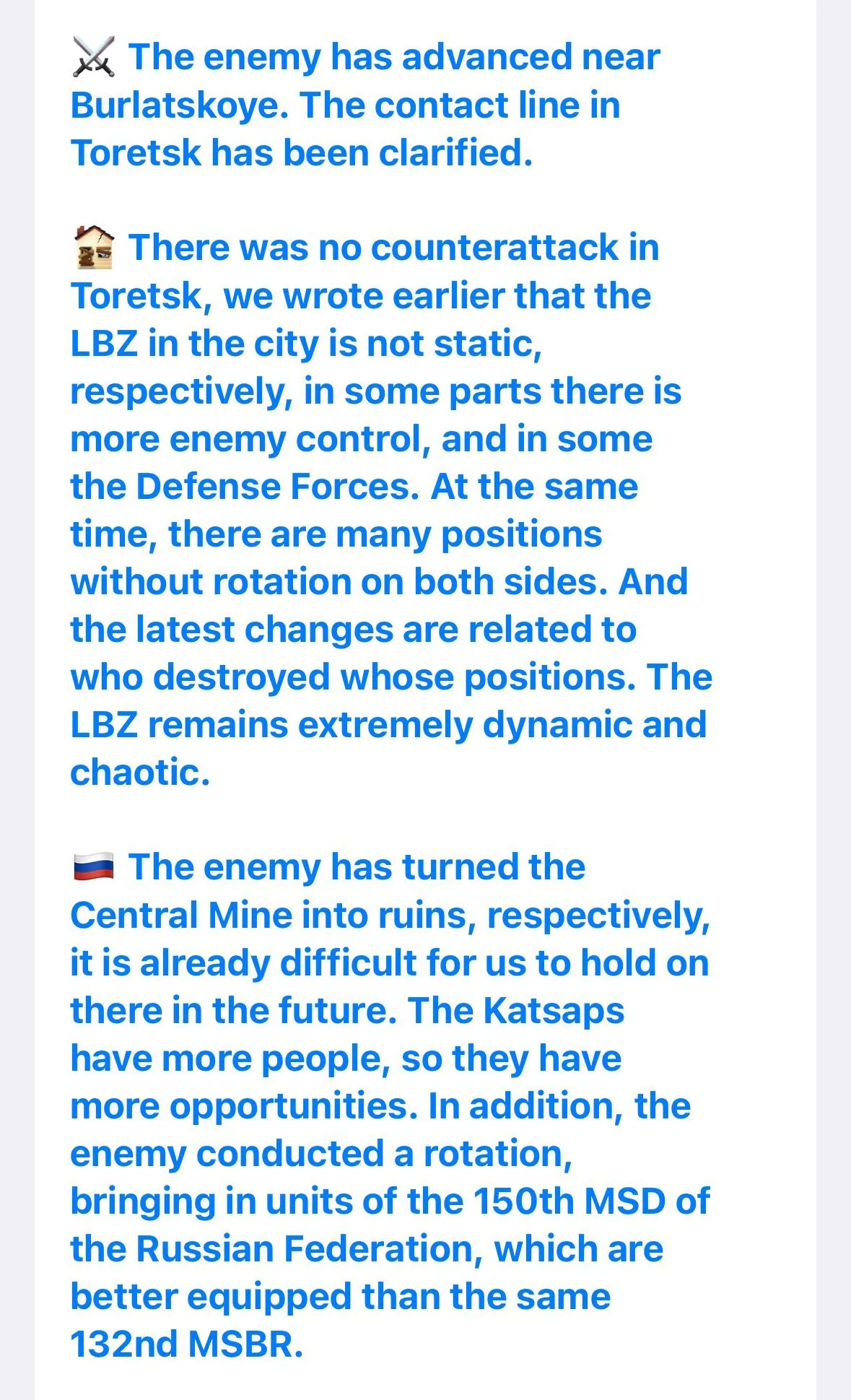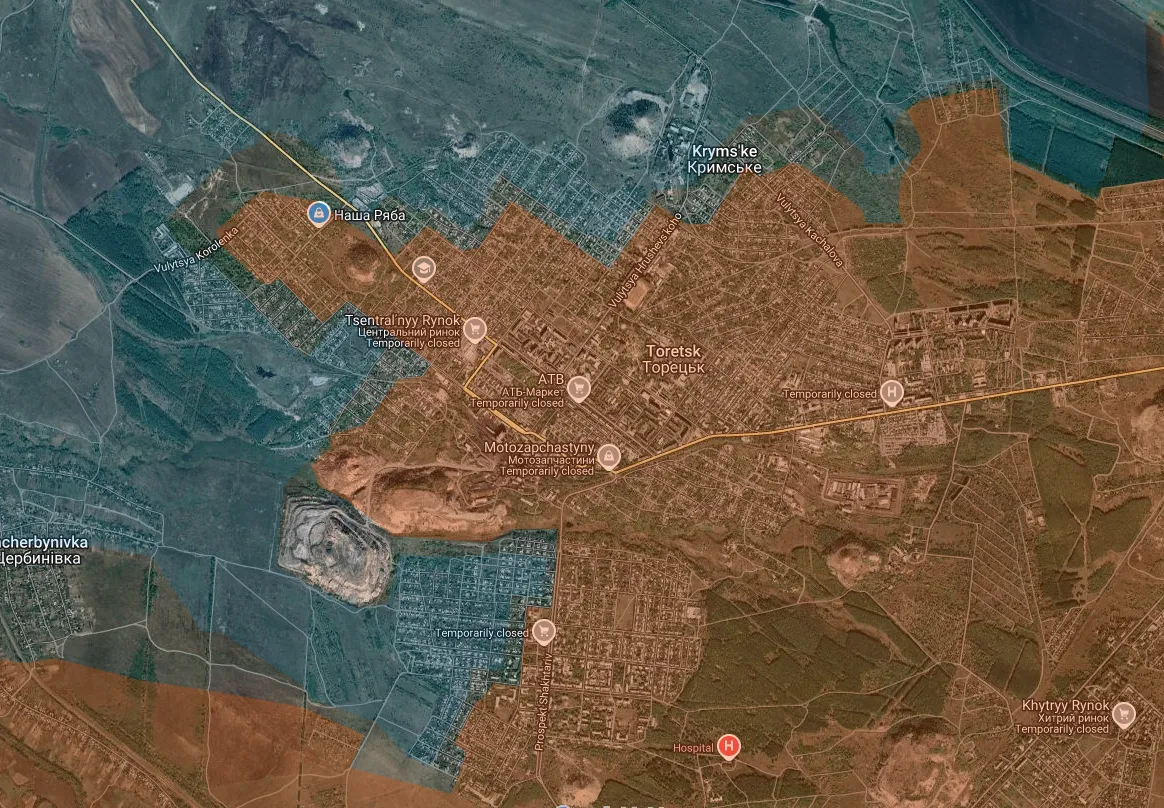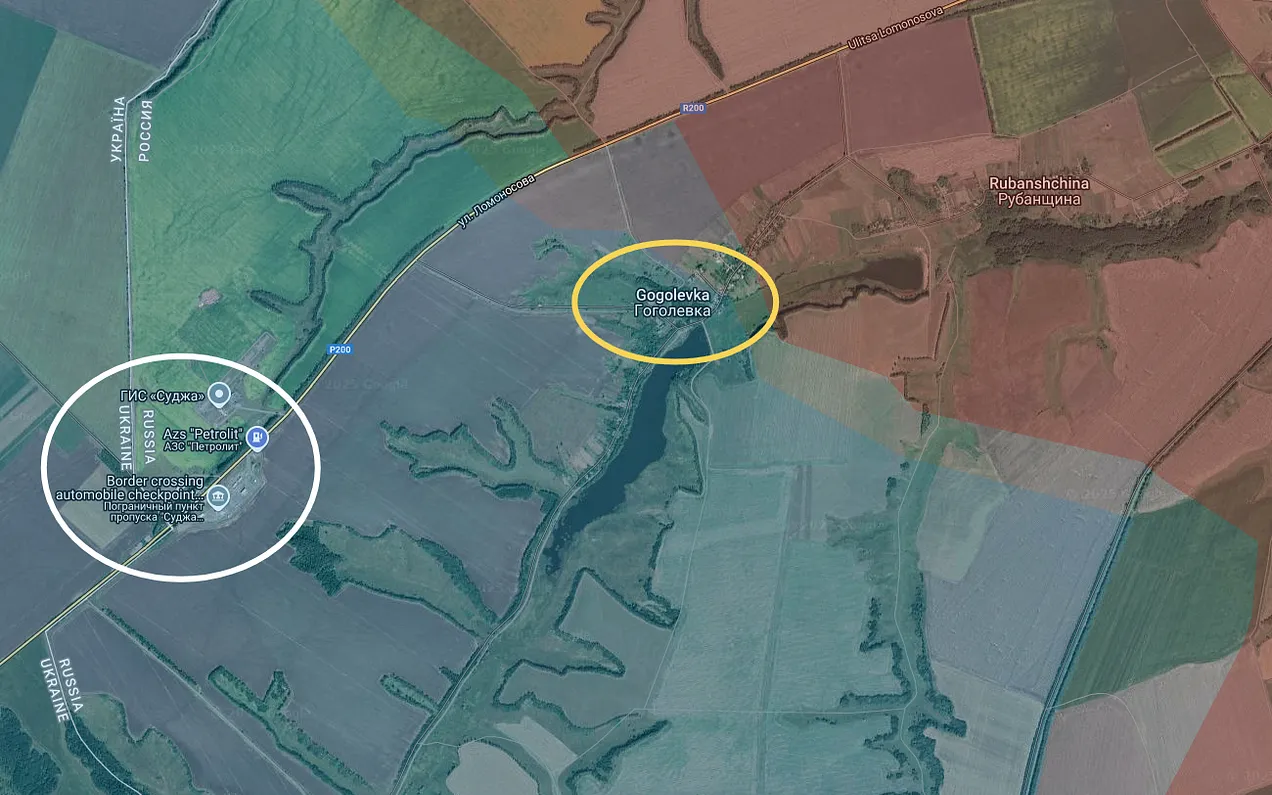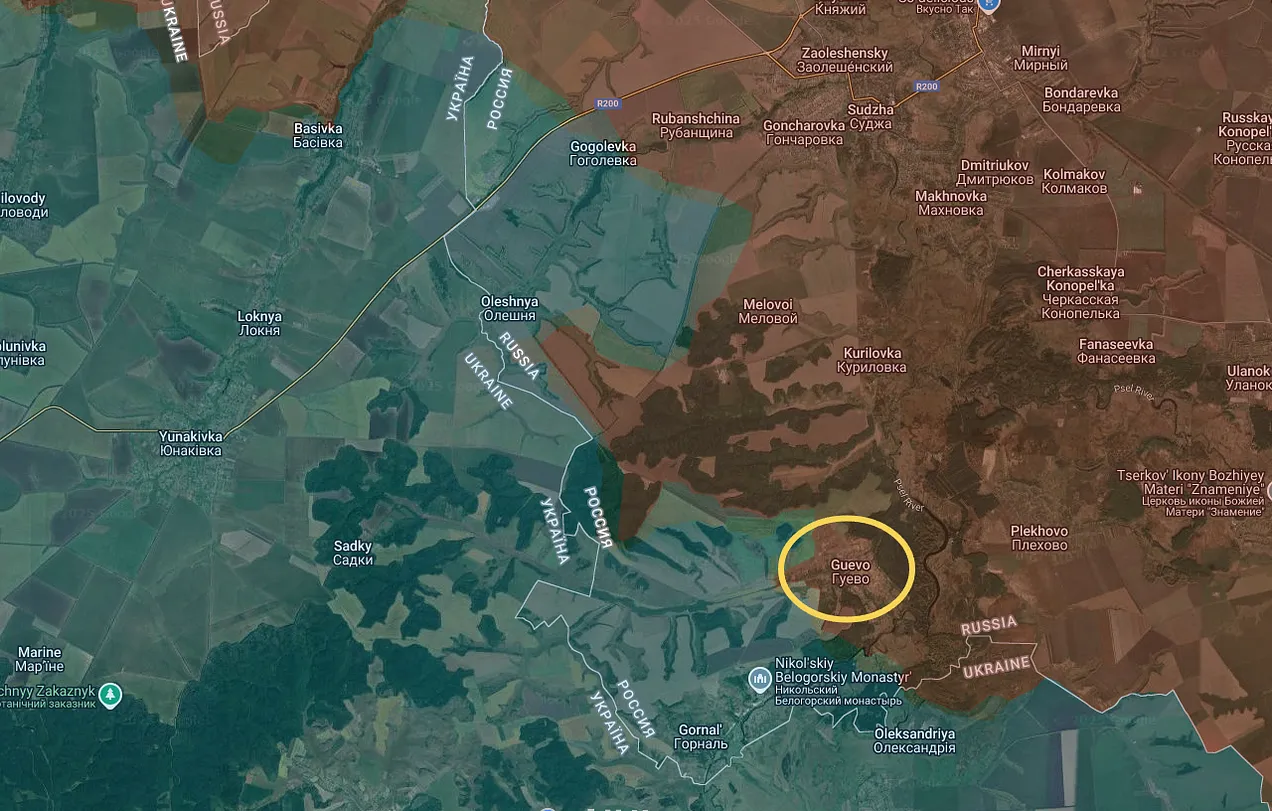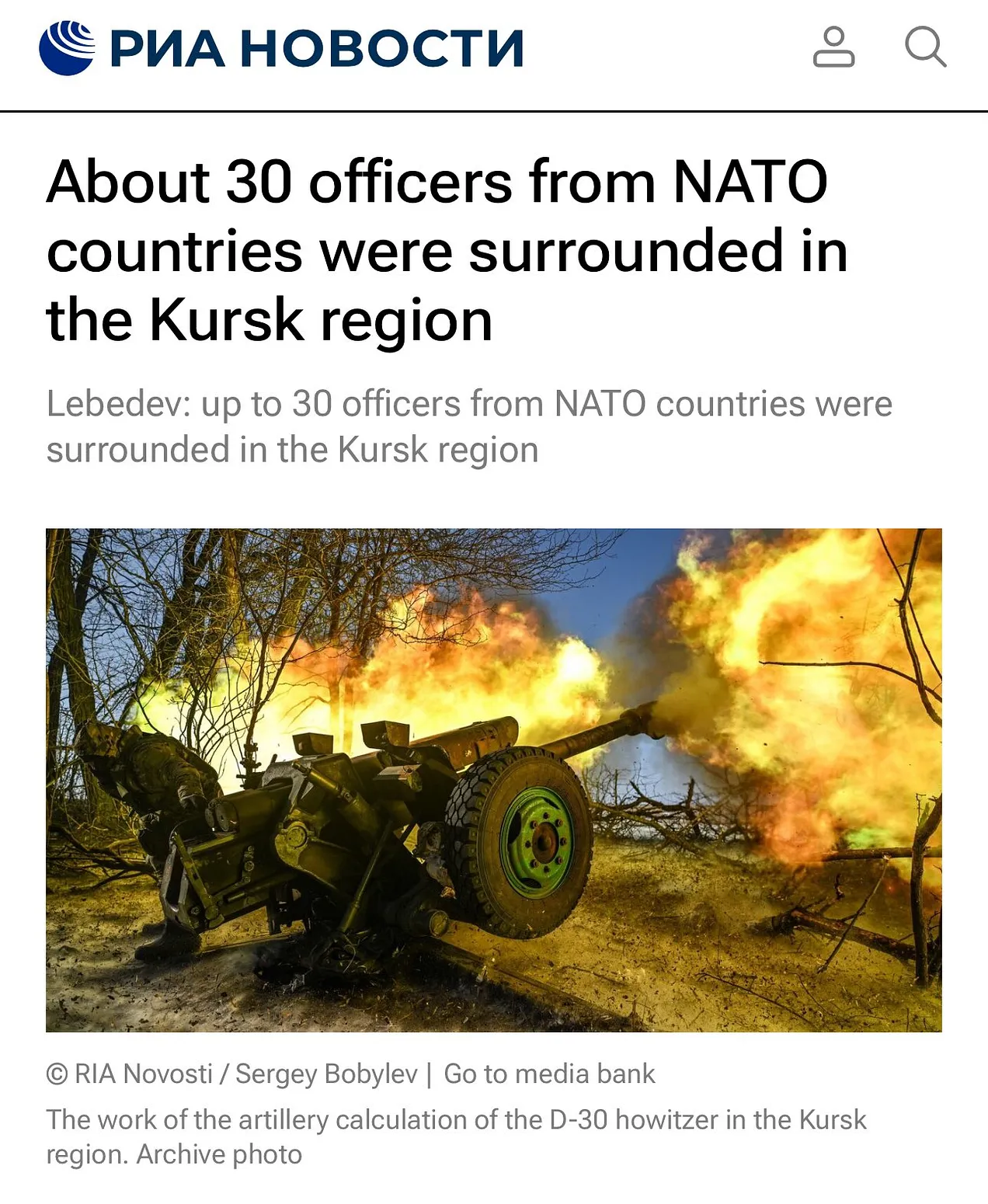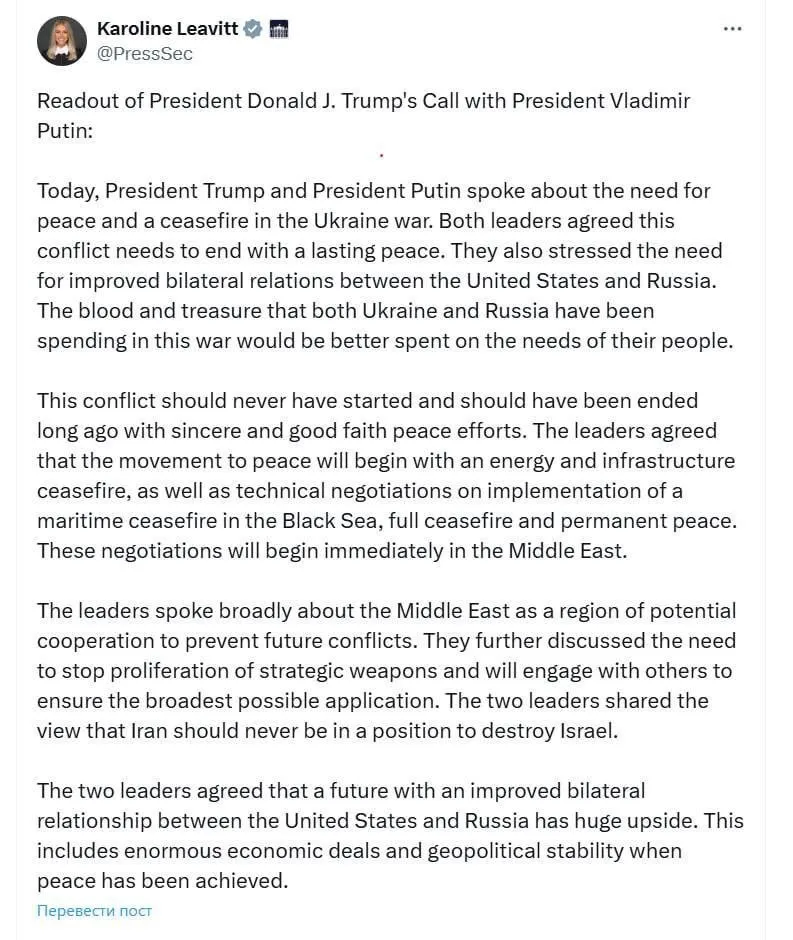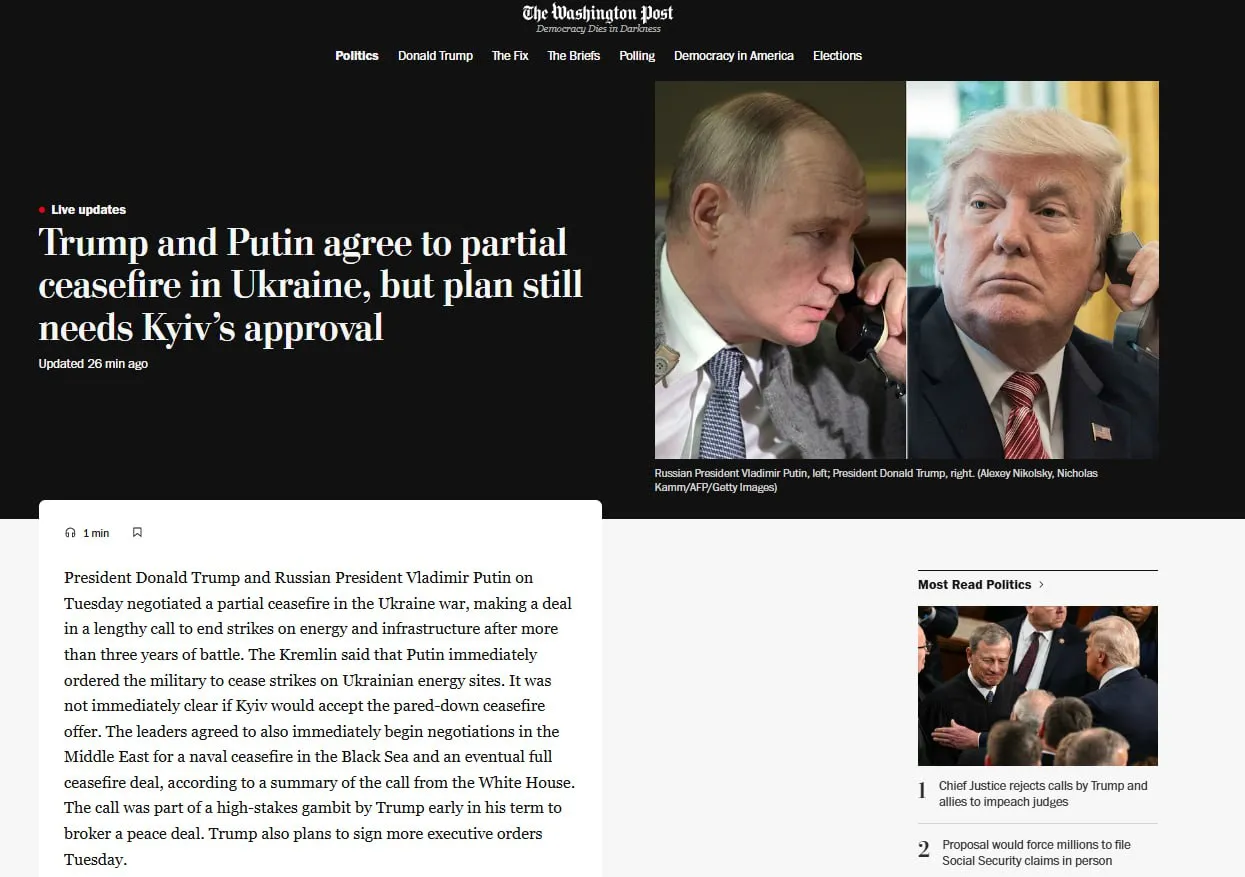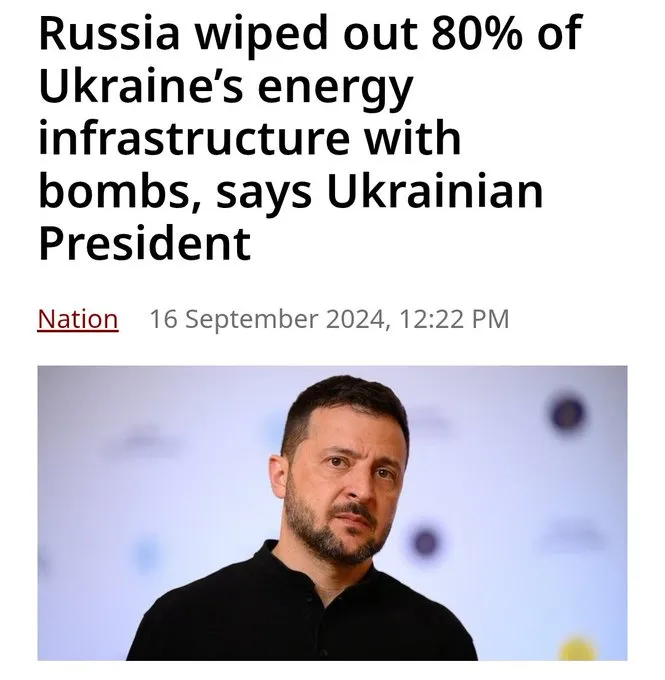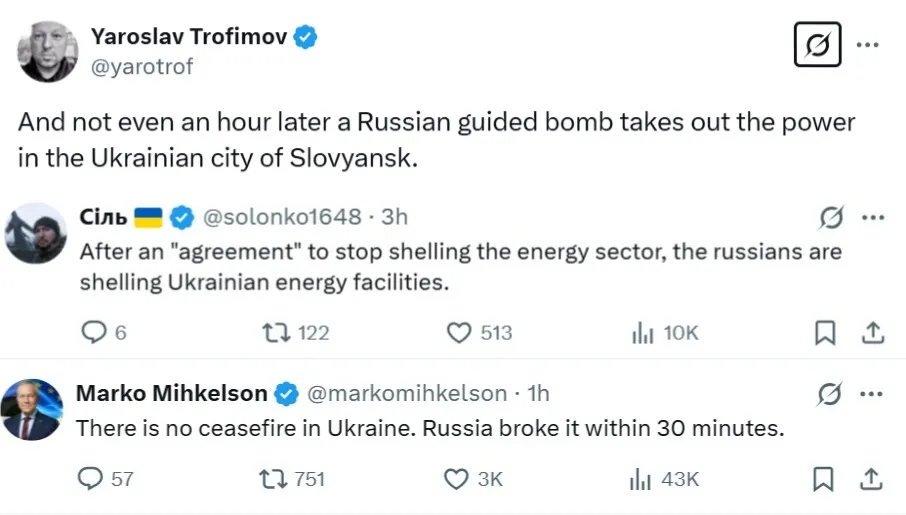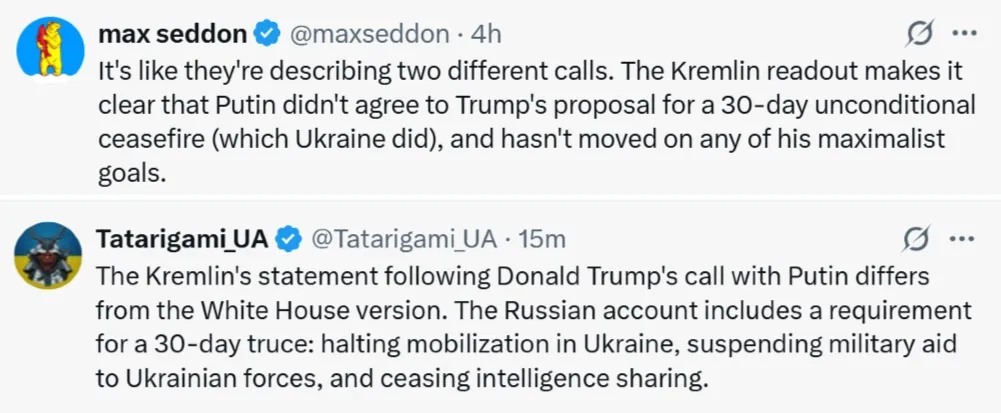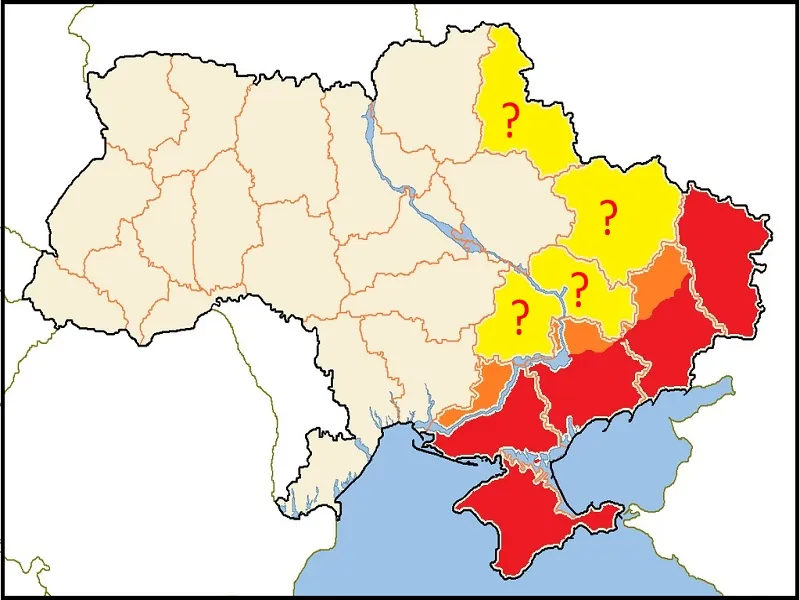Google Translator
******
From Cassad's telegram account:
Google Translator
******
Britain Wants Ukraine’s Minerals Too
March 13, 2025
Shares
“It’s not just Trump.” Mark Curtis reports on the U.K.’s scramble for Ukraine’s natural resources.

U.K. Foreign Secretary David Lammy looking up at Ukrainian flags while visiting Kiev on Feb. 5. (Ben Dance / FCDO /CC BY 2.0)
By Mark Curtis
Declassified UK
When U.K. officials signed a 100-year partnership with Ukraine in mid-January, they claimed to be Ukraine’s “preferred partner” in developing the country’s “critical minerals strategy.”
Yet within a month, U.S. President Donald Trump had presented a proposal to Ukraine’s President Volodymr Zelensky to access the country’s vast mineral resources as “compensation” for U.S. support to Ukraine in the war against Russia.
Whitehall was none too pleased about Washington muscling in.
When Foreign Secretary David Lammy met Zelensky in Kyiv last month he reportedly raised the issue of minerals, “a sign that [Keir] Starmer’s government is still keen to get access to Ukraine’s riches”, the iPaper reported.
Lammy earlier said, in a speech last year:
“Look around the world. Countries are scrambling to secure critical minerals, just as great powers once raced to control oil.”
The U.K. foreign secretary was correct, but Britain itself is one of those powers, and Ukraine is one of the major countries U.K. officials — as well as the Trump administration — have their eyes on.
It’s no surprise why. Ukraine has around 20,000 mineral deposits covering 116 types of minerals such as beryllium, manganese, gallium, uranium, zirconium, rare earth metals and nickel.
The country, whose economy has been devastated by Russia’s brutal war, also possesses one of the world’s largest reserves of graphite, the largest titanium reserves in Europe, and a third of the continent’s lithium deposits.
These resources are key for industries such as military production, high tech, aerospace, and green energy.
In recent years, the Ukrainian government has sought to attract foreign investment to develop its critical mineral resources and signed strategic partnerships and held investment fora to showcase its mining opportunities.
The country has also begun auctioning exploration permits for minerals such as lithium, copper, cobalt and nickel, offering lucrative investment opportunities.
Media narratives largely parrot the U.K. government’s interests in Ukraine being about standing up to aggression. But Whitehall has in the past few years stepped up its interest in accessing the world’s critical minerals, not least in Ukraine.
‘Critical Minerals Work’

Map of minerals of Ukraine, 2022. (Zbigniew Dylewskie / Wikimedia Commons /
CC BY 3.0)
Nusrat Ghani, a trade minister in Rishi Sunak’s government, held at least 10 meetings on the subject of critical minerals in 2023 and the first half of 2024, government transparency data shows.
Among the companies she met were giant U.K. mining corporations Rio Tinto and Anglo American, and arms exporter BAE Systems and military aerospace lobbyists, ADS.
It is not clear if Ukraine was the subject of these discussions but one other prominent firm Ghani met to discuss “mineral supply chains” was Rothschilds, which has extensive interests in Ukraine.

Rothschild & Co Bank’s London offices in the New Court building. (Adrian Welch /Wikimedia Commons / CC BY-SA 2.5)
Ghani held a discussion with the Paris-headquartered global advisory firm in April 2023 while her successor Alan Mak did so the following year in May. Mak met the firm “to discuss Rothschild’s critical minerals work,” the data show.
The corporation was invited to the 2023 Ukraine Recovery Conference held in London and is a member of the U.K.-Ukraine Finance Partnership. It has also been the main adviser to the Ukrainian Ministry of Finance since 2017.
Rothschilds, on whose board sits former U.K. National Security Adviser Lord Mark Sedwill, has no less than $53 billion invested in Ukraine.
‘British-Ukrainian Partnership’

(GOV.UK)
Writing recently in Unherd, researcher Sang-Haw Lee quotes a senior Labour figure saying the U.K. was involved in extensive negotiations for the whole of last year relating to securing exclusive access to Ukraine’s minerals, but that adequate government support was not forthcoming.
Some other meetings have crept into the public domain. Last April, two prominent U.K. parliamentarians met one of Ukraine’s largest mining investment companies in London to discuss “British-Ukrainian partnership in the field of critical minerals mining.”
BGV Group, which has investments of $100 million in Ukrainian mining projects, held discussions with then energy minister, Lord Martin Callanan, and Bob Seely, then a Conservative MP who sat on Parliament’s Foreign Affairs Committee.
The company is seeking investors for its graphite and beryllium projects and said in a media release that “Ukraine has all the prerequisites to become one of Britain’s main suppliers of critical minerals crucial for advanced technologies and the green energy transition.”
“As Ukraine’s ultimate European ally, the U.K. could leverage its strong position within NATO to help secure mining sites and transportation routes”, writes Andriy Dovbenko, the founder of U.K.-Ukraine TechExchange.
‘Vast Resources’
The U.K. government’s “Ukraine Business Guide” notes that “Ukraine has vast resources” and “a rich mineral base of iron ore, manganese, coal, and titanium.”
Certainly, enhancing access to critical minerals has been a broad priority across Whitehall over the last three years.
The U.K. produced its first-ever Critical Minerals Strategy in 2022 and updated this with a refresh” the following year. It identifies 18 minerals with “high criticality” for the U.K., including several present in Ukraine, such as graphite, lithium and rare earth elements.
The U.K.’s strategy aims, among other things, to “support U.K. companies to participate overseas” in supply chains for these minerals and “champion London as the world’s capital of responsible finance for critical minerals.”
As part of its critical minerals strategy, the government set up a so-called Task & Finish group, analysing the risks to U.K. industry, and including participants from BAE, Rio Tinto and ADS. The group highlights titanium, rare earth elements, cobalt and gallium as among the minerals with a supply risk to the U.K. military sector.

Zelenskyy pouring water for Starmer during a NATO Ukraine Council session at the military alliance’s summit in Washington, D.C., in July 2024. Then President Joe Biden and NATO General Secretary Jens Stoltenberg on right. (Simon Dawson / No 10 Downing / CC BY-NC-ND 2.0)
The U.K. has also launched a Critical Mineral Intelligence Centre and established a Critical Minerals Expert Committee to advise the government.
A report by the Foreign Affairs Committee on critical minerals published in December 2023 concluded that “the U.K. cannot afford to leave itself vulnerable on supply chains that are of such strategic importance.”
A sign of how seriously the government is taking the issues is that it says it will “ensure consideration for critical minerals is embedded” in the free trade agreements it is negotiating with a range of countries.
‘Regulatory Structures’

Starmer and Zelenskyy in Kiev in January when they signed a 100-year partnership agreement. (Simon Dawson / No 10 Downing Street/ Flickr/ CC BY-NC-ND 2.0)
Accessing minerals overseas often depends on loosening government regulations to enable foreign corporations to strike favourable deals.
The 100-year partnership declaration commits the U.K. and Ukraine to “supporting development of a Ukrainian critical minerals strategy and necessary regulatory structures required to support the maximisation of benefits from Ukraine’s natural resources, through the possible establishment of a Joint Working Group.”
The thrust of the partnership is to “support a more enabling environment for private sector participation in the clean energy transition” and to “attract investments of British companies in the development of renewable energy sources.”
More generally, the two sides will “work together to boost and modernise Ukraine’s economy by progressing reforms that aim to attract private finance” and “boost investor confidence.”
As Declassified recently showed, British aid to Ukraine is focused on promoting these pro-private sector reforms and on pressing the government in Kyiv to open up its economy to foreign investors.
Foreign Office documents on its flagship aid project in Ukraine, which supports privatisation, note that the war provides “opportunities” for Ukraine delivering on “some hugely important reforms.”
The U.K. supports a project called SOERA (State-owned enterprises reform activity in Ukraine), which is funded by USAID with the U.K. Foreign Office as a junior partner.
SOERA works to “advance privatization of selected SOEs [state-owned enterprises], and develop a strategic management model for SOEs remaining in state ownership.”
U.K. documents note the programme has already “prepared the groundwork” for privatisation, a key plank of which is to change Ukraine’s legislation.
“SOERA worked hand-in-hand with GoU and proposed 25 pieces of legislation of which 13 were adopted and implemented,” the most recent documents note.
‘Geostrategic Rivalries’
Much U.K. foreign policy and wars can be explained by Whitehall wanting British corporations to get their hands on other countries’ resources.
The 2003 invasion of Iraq was mainly about oil while decades earlier the U.K.’s brutal war in Malaya in the 1950s was substantially about rubber. Britain’s support for apartheid South Africa is significantly explained by the U.K. wanting continued access to South Africa’s massive mineral resources.
But the main concern now is China, which is the biggest producer of 12 out of the 18 minerals assessed by the U.K. as critical.
The Ministry of Defence’s major geopolitical forecast, its “Global Strategic Trends,” released last year, makes 57 mentions of minerals, noting that they “will become of increasing geopolitical importance” and could lead to “new geostrategic rivalries and tensions.”
History suggests that Whitehall’s international strategy on critical minerals, and its scramble for Ukraine’s, will continue to shape U.K. foreign policy and contribute to these future international tensions.
https://consortiumnews.com/2025/03/13/b ... erals-too/
It would appear that the Brits are as delusional in this as with so many other things.
******
Riyadh 'Ceasefire'? Analysis and reactions
Why declared 'openness to a temporary ceasefire' is probably a trap. Ukrainian and Russian reactions
Events in Ukraine
Mar 12, 2025
Is the war finally coming to a close? While events are certainly transpiring, so far it looks dubious. Here’s a list of today’s topics:
Zelensky hardliners against any ceasefire seem to believe that Zelensky’s agreement to (openness to) ceasefire in Riyadh is still an epic victory.
Maybe they’re right - Ukrainian political analyst Ruslan Bortnik isn’t optimistic about the new ‘agreement to openness to temporary ceasefire’
Responses from Ukrainian’s Trumpian (Dubinsky) and Euro-Nationalist (Honcharenko) opposition figures
Takes from Russia
A Ukrainian diplomat at the talks gives a strange account of ‘difficult compromises’ made due to exhaustion
Zele Loyalists Vindicated?
It’s been 10 days since Zelensky #resisted Trump’s (Krasnov?) nefarious demand for peace. Since then, Zelensky seemed to be going full steam ahead allying the West against the grand Russo-American fasco-communist condominium. Top Zelensky mouthpieces in Ukraine like parliamentarian Mariana Bezuhla were putting out defiant calls for forever war:
If the Ukrainian people are forced into a ceasefire, it will be our de facto capitulation, opening the way for the enemy to a new, even larger war. (March 1)
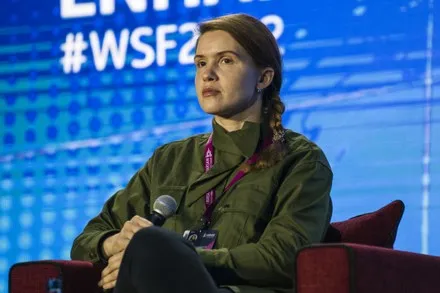
And on the eve of the March 12 Ukraine-US negotiations in Saudi Arabia, Bezuhla stayed firm:
Do not expect anything from the negotiations—we are FORCED to get used to perceiving the U.S. government as our enemy and an ally of Russia.
To ensure that no one on the Ukrainian side agrees to surrender, any signature from Ukraine under the current circumstances is a step toward capitulation.

As you can see, telegram users weren’t impressed.
Zelensky advisor Serhiy Leshchenko was also adamantly opposed to any ceasefire. Certainly a hardliner, especially given his much-publicized love for cocaine and other snortable substances.
Leshchenko is also well-known for being the USAID-funded journalist who fired the first volley in what would become the Manafort scandal. Rudy Giulani’s least favorite person in Ukraine, maybe on earth. Anyway, plenty of bad blood with Trump. I have no clue why Zelensky is keeping him around at the current conjuncture, but what can you expect from him.
Anyway, here’s Leshchenko’s brave March 10 intervention as described by strana.ua, Ukraine’s top oppositional media source:
Ukraine will not agree to a ceasefire on land, said Serhiy Leshchenko, an advisor to the head of the Presidential Office.
According to him, American aid is not so critical that Ukraine should stop fighting under conditions that are being "imposed" on it.
"Trump asks: Is there a plan for a ceasefire? We answer: Yes, we have a ceasefire plan. We propose stopping fire from the air. This includes drones, missiles, and ballistic weapons. We also propose a ceasefire at sea. We commit not to attack. This, by the way, is paradoxical, because we currently hold the initiative in the Black Sea. We also propose not to attack energy infrastructure. If you want a ceasefire, we are ready. But not on land, where Putin could use the ceasefire for several months to treat his wounded, recruit infantry from North Korea, and restart the war," Leshchenko said during a televised marathon.
He also stated that 70% of Ukrainian military losses are caused by drones, and by this logic, Ukraine's proposal should be "beneficial" for Russia.
It is important to note that the statistics do not refer to long-range drones, the use of which Zelensky is proposing to ban, but rather FPV drones, which are used on the front lines against enemy equipment and personnel. Their use cannot be stopped without a full ceasefire "on land," which Kyiv opposes.
At the same time, Zelensky's proposal would nullify Russia's advantage in long-range strikes, since Moscow has more missiles and drones capable of hitting Ukraine from a distance.
As for naval strikes, Russian forces regularly shell Ukrainian ports and ships docked there, while Ukraine conducts attacks at sea far less frequently.
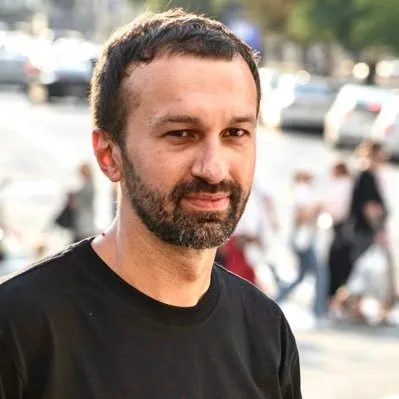
Leshchenko, ex-husband of DJ Nastya
But nevertheless, last night’s Ukraine-US negotiations in Riyadh seem to have concluded with Ukrainian ‘defeat’. Zelensky’s representative at the talks (or puppetmaster, depending who you ask) Yermak agreed to Trump’s demand for a 30-day ceasefire last night. What happened?
One has to note Washington’s cutting off of military aid as a suitable incentive. The White House now claims that the flow of intel and arms to Ukraine has started up again. Perhaps my pre-Trump skepticism of the ‘great peacemaker’ wasn’t without merit.
Skeptical views
Jn reality, this ‘ceasefire’ is nothing of the sort. Director of the Ukrainian Institute for Politics Ruslan Bortnik isn’t too optimistic about it. Bortnik is nowadays often cited by Politico, but I’ll also add that he is a Russian-speaker who generally appeared on ‘pro-Russian’ television channels in Ukraine. His thriving in wartime speaks to both his political acumen and the fact that many ‘pro-Russian’ politicians still remain quite powerful (sometimes in their capacity as hostages).
(Paywall with free option.)
https://eventsinukraine.substack.com/p/ ... -reactions
******
Tarik Cyril Amar: Rape and torture: Will the West cover for Kiev’s war crimes?
March 13, 2025 natyliesb
By Tarik Cyril Amar, RT, 2/4/25
Russia’s Investigative Committee has announced the initiation of a criminal investigation into the killing of civilians in a small village in Kursk Region.
The region on the border with Ukraine is, of course, the site of the worse than pyrrhic incursion which Kiev launched into Russian territory last August. Since initially being overrun, the territory under the control of Ukrainian forces has unsurprisingly been shrinking under a Russian counterattack, while Kiev has been wasting its soldiers’ lives on yet another strategically absurd and tactically mulish to-the-last-man stand in classic Zelensky style.
Against this grim backdrop, the village in question, Russkoye Porechnoye, was under temporary Ukrainian occupation before being liberated by Russian forces. Entering the settlement, those forces reported finding evidence of the crimes that are now under investigation.
Specifically, Russian prosecutors charge Ukrainian forces with severely abusing and killing 22 civilians (11 men and 11 women) in Russkoye Porechnoye. They have also identified five individual Ukrainian servicemen as perpetrators: they go by the field pseudonyms of “Kum” (godfather), a platoon commander, “Motyl” (moth), “Provodnik” (conductor), and “Khudozhnik” (artist) and belong to Ukraine’s 92nd assault brigade. A fifth man, Evgenii Fabrisenko, is of special importance as he is the only one – at least until now – who has been apprehended by Russian forces.
His confessions, partly shown on Russian primetime news and on widely watched talk shows, seem to be a key source for information on the other perpetrators. Apart from providing details about the cruel abuses – including rape – and killings in Russkoye Porechnoye, Fabrisenko also claims that the perpetrators received an order from their battalion commander to “cleanse” the settlement. That is an important detail since it implicates the commander in the crimes even if he was not personally present.
At this point, the Russian authorities have launched an investigation, named suspects, and made specific accusations. It is true that, at the same time, Russian media and politicians treat the crimes already as fact: Dmitry Peskov, spokesman for Russian President Vladimir Putin, for instance, has underlined that the atrocities of Russkoye Porechnoye must be acknowledged and widely publicized, even if the West and Ukraine pretend to be deaf to this kind of news. Maria Zakharova, spokeswoman for the Foreign Ministry, has denounced the crimes as typical of the “terrorist and Neo-Nazi” Kiev regime, which, she stressed, is supported by the West.
But the investigations have not been completed, and trials have not yet taken place. At least until then, conclusive assessments of what exactly happened in Russkoye Porechnoye and who precisely took part in it are out of reach. It should be noted, however, that things can get even worse: Russian prosecutors speak of five identified perpetrators at least. Others might still become targets of investigation. The battalion commander, in any case, seems liable to be charged under the command responsibility principle.
Even without speculating, we do know a few things already: very serious, detailed allegations of war crimes and crimes against humanity have been made. Russian prosecutors and media are showing us pieces of evidence and of the confessions of one of the accused. Leading Russian politicians have invested their credibility into supporting these allegations.
Even if some of the rhetoric around the case in the Russian media is, unsurprisingly, intense (it would be everywhere), there is no good reason to simply dismiss all of the above as “fake.” Yet that is what Ukraine and the West have done. Intriguingly, with few exceptions that seem to almost fulfill an “alibi” function, this wholesale dismissal has mostly taken the form of keeping quiet about the case: try googling for “News” about “Russkoye Porechnoye” in Russian and in, for instance, English, and the pattern is clear. That may still change in the future, but it is already a fact that the initial Western and Kiev response has been what the Germans call “totschweigen,” that is, hushing something up until it is – or at least seems – dead.
In that regard, as a minimum, both Peskov and Zakharova have an important point: even if Western and Ukrainian observers and politicians want to contradict Russia’s version of events, their silence is entirely inadequate, in three regards:
First, despite endless Western mainstream media brainwashing there is no a priori reason to simply dismiss the Russian accusations because they also carry an inevitable political charge: In general, facts can do so and still be facts. In the case of Russia, specifically, its record of telling or not telling the truth is, actually, no worse than that of the West or Ukraine (witness the ludicrous Western and Ukrainian lying about the Nord Stream sabotage or Western denialism about Israeli genocide), to say the very least.
It is true that Amnesty International has criticized prior Russian judicial procedures against Ukrainian POWs as unfair. In 2023, a UN commission of enquiry found that “Russian authorities have used torture in a widespread and systematic way in various types of detention facilities.” Yet even if you believe all of the above, it is reasonable – and not “whataboutism,” that last refuge of the special pleader – to apply the same standards to every state: The Ukrainian army, for instance, has an extensive and well-documented record of horrendous and pervasive illegality, including kidnapping, assassinations, “renditions,” and torture. And yet no one in the Western mainstream media would simply dismiss without further ado allegations that its officials make about others’ crimes.
Thus, if you take allegations out of Kiev, Washington, or, say, London seriously enough to give them at least a hearing, you’ll have to do the same for Moscow. You won’t have to – and should not – believe anyone without evidence, but you cannot quickly decide to disbelieve anyone just because you feel you are “on the other team” either.
Second, there is no reason to consider Ukrainian soldiers immune to committing crimes. The West may have turned a blind eye to plenty of very questionable behavior – to put it mildly – by its proxy’s forces, from shelling civilians in Donbass to mistreating Russian POWs. And the Kiev regime has invested heavily in a deliberate attempt to “sell” its war effort as unrealistically kind and innocent.
Yet we still have some evidence independent of any Russian claims: Early in the war, Western media and Amnesty International, for instance, still dared to report Ukrainian crimes. In addition – and again despite the West’s massive efforts at obfuscating and “normalizing” this fact – Ukrainian troops do include substantial numbers of men with extremely violent, far-right ideologies.
In addition, the Ukrainian public sphere has been subjected to a systematic dehumanization campaign, in which all Russians have been depicted not merely as enemies but as monstrous and inferior (often using slurs, such as “vatnik,” a demeaning term implying backwardness; “rashist,” a contraction of “Russian” and “fascist”; or “Orc,” borrowed from Tolkien’s Lord of the Rings). The systematic adoption of this language by the political elite and the mass media has had real effects. As Al Jazeera reported as early as May 2022, even a humble sales clerk in Kiev knew and shared its message: “They’re orcs because we don’t consider them human.”
Indeed, many Western “friends” of Ukraine had nothing better to do than to excuse, encourage, and even adopt this foul rhetoric. Those who may wish to justify such talk as a virtually inevitable consequence of war will still have to admit that it can have severe consequences beyond words: soldiers – that is men with arms who can end up in positions where they have the upper hand over civilians without arms – taking this dehumanizing language seriously will feel free, even encouraged to commit atrocities.
And, finally, the third reason why we cannot simply dismiss the Russian accusations is that crimes have victims. If the Russian accusations are borne out, then it will be principally unjust to pretend that the crimes against these victims do not exist or do not matter simply because they are “on the other side.” Because that would imply that these victims do not matter. Yes, there is a fundamental ethical issue here.
It bears repeating that, if we think in large numbers – and this has become a war of very large numbers indeed – then it is still likely that the preponderant majority of Russian and Ukrainian soldiers are not criminals. They are now at war, and they live and die violently. I know Russian and Ukrainian and I have met many Russians as well as Ukrainians. Call me naïve if you wish, but I will hope until the opposite is proven that, on both sides, most of those fighting are not rapists or murderers. And when this war will be over, everyone will need to remember this, if they want a better future. Yet everyone will also have to be honest about not only the crimes they accuse others of but also those that some on their own side will have committed.
And as far as the West is concerned, those honest enough to face reality will find that no one has remained innocent. The West – its politicians, intellectuals, and media representative – in particular, will have to admit its abysmal, essential contribution to making this war happen and keeping it going. The psychological shock delivered by this predictable, late (as always), and inevitable (in the long run) discovery will produce ongoing denial, but also, hopefully, at least some soul-searching. Because a West that always claims the moral high ground must finally understand itself: it is no better than others, and, given its extremely aggressive conduct since the end of the Cold War – not to adopt a longer, also plausible perspective – it may well be worse.
https://natyliesbaldwin.com/2025/03/tar ... ar-crimes/
******
They Wanted Kursk Battle.
They've got it. This is for those who get lost in scales and proportions--a reminder. This all has been happening at the small wedge of the Kursk Oblast initially about 400 sq.km (roughly 154 square miles). This is roughly the area half that of the area of NYC. "Brilliant" NATO planners, especially British, who for some reason consider themselves masters in whatever (primarily chicken shit), pumped into this wedge this "thing", which today doesn't exist anymore. Latest from Russian MoD.

So, NATO losers decided to kill a whole combined arms army (or roughly the whole of British Army by comparison) of Ukrainian and NATO "advisers" cannon fodder and ... they succeeded, Russians took care of it. Here are the numbers. By the time all disjoined (fractured) groups of shell-shocked, panicked and demoralized wandering remnants of VSU will be completely mopped up, the personnel losses may reach 70, 000. But what's more--the thing which Western militaries simply block out, because it really hurts their feelings--these are kill ratios. While Russian forces did sustain losses, the kill ratio in Kursk is not even an average of 1 to 10-12, it is somewhere on the order of 1 to 15-20. It is a slaughter of the elite, most fanatical and the best trained troops NATO could provide (average VSU "elite" combatant is better than any combatant from the NATO armies, the US Army included). They are not there anymore.
They also excelled at executing their own who didn't want to die under Russian fire. The body of evidence of atrocities not only against own, but Russian POWs and civilians is overwhelming. NATO militaries are forever stained as good only at killing defenseless. This is the end of any kind of "high" (from pot?) moral ground the US Army ("the force for good" like providing ISR for Nazi regime in Kiev and manning its long-range fires against civilians) tries to pretend it occupies--it doesn't. Vladimir Putin was clear--treat ALL of the VSU who committed atrocities as terrorists. Guess what, NATO "advisers" will not have the protection of Geneva, plus--being a de Facto barrier troops (that's where NATO excels too) shooting into the backs of retreating hapless VSU is a war crime and atrocity. So, let's wait and see what Mr. Witkoff tells his counterparts in Moscow this week ...
http://smoothiex12.blogspot.com/2025/03 ... attle.html
******
Who is behind the atrocities of the Ukrainian Armed Forces in the Kursk region?
Executioner
colonelcassad
March 13, 17:18
photo_2025-03-12_21-44-52.jpg
Who is behind the atrocities of the Ukrainian Armed Forces in the Kursk region?
Part I: "Artist" of war crimes
First of all, we would like to introduce you to one of the commanders of the Ukrainian occupiers in the Kursk region - the highlight of the program will be Anatoly Georgievich Buryak - commander of the "Shkval" unit of the 129th brigade of the Troops of the Armed Forces of Ukraine. This unit entered the territory of the Kursk region in August 2024 and operated in the area of the settlements of Borki, Plekhovo, Kurilovka and Guevo. We will write about the crimes committed by the unit's fighters below, but first we will introduce you to the personality of their commander (is he even a person?)
The "hero" of this article. Anatoly "Artist" Buryak
Meet: Krivoy Rog crime boss, war criminal, and just a nasty guy Anatoly Buryak. From his biography it is known that in the wild 90s Buryak was engaged in racketeering in the Krivoy Rog district of Sotsgorodok, and later, having saved up a certain fortune through crime, he got into sports and politics. In pre-Maidan times he was a member of the "Party of Regions" and was the owner of the basketball club "Kryvbasbasket", however, after the events of autumn-winter 2013-2014, he abruptly "changed his shoes", taking an exclusively pro-Ukrainian position. After the Maidan, things with the sports business did not go so smoothly, and at one point Buryak, together with his business partner named Kolesnik, took and "ditched" the athletes, stopping financing the club and leaving the country. When the noise died down, he returned to Ukraine and settled in the Bucha area of the Kyiv region, where he met the beginning of a special military operation. Buryak didn't have much time to think, so he quickly joined a territorial defense unit, where he fought for some time on the territory of the DPR, and later ended up in a mobile air defense unit in Sumy region, where he gave an interview to one of the Ukrainian TV channels, telling about his "exploits".
War is an expensive business, so when Zelensky had another need for people, and the victims of "busification" were not showing very good results, suffering heavy losses or surrendering en masse to the Russian Armed Forces, it was decided to strengthen the rapidly wearing out units of the Ukrainian Armed Forces with a special contingent - yesterday's criminals. And here, Buryak's certain connections came in handy, who, although he did not serve a sentence in places not so remote, was a rather weighty figure in the Ukrainian criminal world, at least in Krivoy Rog. Buryak, having quickly realized where this was all heading, began traveling with his henchmen to the colonies in the Dnepropetrovsk region - first of all, in the Krivoy Rog district, since he had certain connections in the leadership there. Having secured a quota for his unit, the 129th Brigade of the Troops of the Armed Forces of Ukraine, for the "Shkval" unit (this is how units consisting of special contingents are called in Ukraine, an analogue of the domestic "Storm Z"), the Krivoy Rog crime boss received the position of detachment commander there,thus becoming a kind of "boss" for yesterday's criminals.
Recruiting a special contingent from the colonies, Buryak and his henchman with the call sign "Deputy" were preparing for the next "counteroffensive" of the Armed Forces of Ukraine, spending time at training grounds in the Sumy and Dnipropetrovsk regions of Ukraine. In early August 2024, the unit of the 129th separate brigade of the Troops of the Armed Forces of Ukraine "Shkval" was sent to occupy and hold settlements and adjacent territories in the Kursk region. During the Ukrainian invasion, the militants of "Shkval" managed to be quartered in the settlements of Guevo, Plekhovo and Borki (at the time of writing, Plekhovo and Borki were liberated by the Armed Forces of the Russian Federation, the militants of the Armed Forces of Ukraine, including from the above-mentioned unit, suffered significant losses in manpower and were forced to retreat across the Psyol River). And then a series of war crimes of the Armed Forces of Ukraine began.
Part II: Complete carte blanche for atrocities
Entering the territory of the Kursk region, yesterday's criminals (and not only) had complete carte blanche to commit war crimes, the command not only did not prevent this, but also encouraged it in every possible way. For example, Buryak and his henchman "Deputy" personally gave priority for leave and rotation to those persons who unquestioningly followed their orders, and the orders were different:
For example, Buryak encouraged looting in every possible way: it was established that the militants of the "Shkval" detachment took out to the territory of Ukraine a huge amount of household appliances, power tools, gasoline generators, jewelry and motor vehicles of civilians from the territory of the settlements of Plekhovo and Borki. Of course, these household items and motor vehicles did not go to the "common", but to Buryak's personal warehouses in the Sumy region, and where this was subsequently sold is unknown. For their success in looting, the Shkval militants had priority in leaving for the Sumy region for rotation or vacation.
On September 13, 2024, Buryak personally ordered one of the Shkval militants to shoot a civilian (male, 40-45 years old) in the north of the village of Plekhovo. The reason for such an order is not exactly known, but the immediate executor, identified as Turluk Denis Leonidovich, call sign "Kytsya", carried it out without question, shooting the man and leaving his body lying in one of the gardens of Plekhovo. It was also established that for committing a war crime, Turluk D.L. received an incentive from the command in the form of an unscheduled departure from the combat zone to the territory of the Sumy region.
Direct executor of the criminal order
War criminal responsible for the murder of a civilian in the village of Plekhovo in the Kursk region: (we ask law enforcement officers and military personnel of units and formations of the RF Armed Forces to take this information into account in the event that the above-mentioned person is captured)
Full name: Turluk Denis Leonidovich
Date of birth: 11.07.1998
Place of residence: Dnipropetrovsk region, Krivoy Rog district, village Svobodnoye, Kalinina street, 6/6, 69061 Zaporizhia region, settlement KUSHUGUM, Krupskoy street, house 85
Circumstances of the incident: On September 13, 2024, in the settlement of Plekhovo, a 40-45-year-old civilian was shot by a militant of the Shkval detachment, Turluk D.L. The body of the executed person was left lying in one of the vegetable gardens of the settlement of Plekhovo.
It was established that Turluk D.L. had previously served a sentence in penal colony No. 80 in the city of Krivoy Rog.
Part III: Recruitment of special contingent in Ukrainian colonies:
As for the methods of recruiting special contingent from Ukrainian penal colonies, there is a standard scheme: As practice has shown, some colonies are assigned to a certain unit, in particular, colony #80 from Krivoy Rog supplied fighters to the ranks of the 129th Brigade of Troops of the Armed Forces of Ukraine (of course, not without the help of the "authoritative businessman" Buryak, who is a battalion commander in this unit) and the methods of recruiting prisoners were the most common: for example, the head of the operational unit offered prisoners to sign a contract with the Armed Forces of Ukraine, because "it is better to go now for money than to have you all taken away for free later." This was also facilitated by Ukrainian propaganda, broadcast around the clock in the barracks - the prisoners firmly believed that the Ukrainian army was winning and "the Armed Forces of Ukraine are already driving the katsaps to the Urals." Of course, there were those willing. From the testimonies of captured "characterniks" it was established that "392 people left the colony for the front, however, there were 420 people who wanted to, 28 people did not pass the so-called professional selection". "Professional selection" means a medical commission and relevant measures to determine fitness for service.
Actually, after signing the contract (the contract with the Armed Forces of Ukraine is signed in the colony, where representatives of the TCC arrive), people from a certain military unit arrive for the newly minted "volunteers", after which they begin a standard course for young fighters, and then are assigned to the front. Some stayed in the "training center" for a long time, some were almost immediately sent to LBS, in any case, all those who wanted to went to war. By the way, Ukrainian "characterniks" are not entitled to pardon, they are promised a vague prospect of parole. According to captured "characterniks", their salaries were not paid in full.
In fact, when recruiting "characterniks", the Ukrainian Armed Forces leadership sets them the corresponding tasks - to kill, rob, rape. Of course, no one in the Ukrainian leadership cares what these people will do at the front with civilians and their property, because in general they don't care how many war crimes will be committed - the main thing is that they share with the higher command and a blind eye will be turned to it.
As for all those involved in war crimes - we will definitely find and punish them. Such acts have no statute of limitations.
t.me/avcgroup - zinc






